А.Шепс Самолеты Первой мировой войны. Страны Антанты
После удачных полетов самолетов "Ваузен Фарман-1" и "Ваузен Фарман-II", построенных на заводе братьев Ваузен, братья Анри и Морис Фарман организовали собственную фабрику по строительству самолетов. Первой машиной стал трехстоечный бесфюзеляжный ферменный биплан "Фарман-III", взлетевший впервые в конце августа 1909 г. Машина послужила основой для одного из самых популярных в период перед Первой мировой войной учебного самолета "Фарман-IV". Этот самолет выпущен в тысячах экземпляров во многих странах. Большинство военных летчиков Первой мировой войны учились летать именно на машинах этого типа. Все последующие машины фирмы во многом повторяли конструкцию этого самолета, постоянно улучшая и совершенствуя ее.
Машина имела предельно простую конструкцию. Пояса ферм, первоначально деревянные, позднее изготавливались из металлических труб. Стойки ферм и крыльев деревянные. Растяжки - стальная проволока. Крыло двухлонжеронное, тонкое, с постоянной хордой и зависающими элеронами на верхнем крыле бипланной коробки. Киль отсутствовал, и рули поворота навешивались на задние стойки ферм. Стабилизатор бипланного типа имел конструкцию, аналогичную конструкции крыла. Установлен был и дополнительный руль высоты на балках перед крылом. Обтяжка крыльев и оперения была первоначально только односторонней, по нижней поверхности, а сверху полосками обшивались только нервюры и узлы лонжеронов. Позднее она стала двухсторонней, что значительно улучшило летные качества самолета. Шасси было оригинального, "фармановского" типа, на полозьях с амортизаторами, устанавливались две короткие оси со спаркой колес на каждой. Пилот и пассажир сидели на нижнем крыле. За ними устанавливался топливный бак, а по задней кромке крыла - звездообразный, воздушного охлаждения, двигатель с деревянным винтом типа "интеграл". Устанавливались двигатели различных типов и различной мощности.
Модификации
"Фарман-IV" - массовая серия учебного самолета, строившегося во многих странах с различными двигателями и из различных конструкционных материалов. Двигатель, в основном, "Гном" (50 л. с.), но были отдельные машины с двигателями мощностью 60л. с., "Рено" (55л. с.).
"Фарман-Авиага" - стойки в коробке крыльев были заменены системой расчалок и шпренгелей, Другое отличие - удлиненные полозья двухколесного шасси. Двигатель "Аргус" (60 л. с.).
"Фарман-Альбатрос" - самолет немецкой постройки, верхнее крыло имело короткие консоли. Двигатель "Гном" (50 л. с.).
"Фарман-Бристоль" - английская копия "Фарман-IV" с отдельными усовершенствованиями. Двигатель "Гном" (70л. с.).
"Фарман-Милитэр" - вариант "Фарман-IV" с тем же двигателем, короткими консолями верхнего крыла с подкосами и небольшой обтекаемой гондолой для экипажа.
Показатель "Фарман-IV" "Фарман-Бристоль"
1910г. 1911 г.
Размеры, м
длина 12,50 11,87
размах крыльев 10,50 15,65/10,50
Площадь крыла, м2 41,00 62,0
Вес, кг
максимальный взлетный 580 610
пустого 400 383
Двигатель "Гном" "Гном"
мощность, л. с. 50 70
Скорость, км/ч 65 65
Экипаж, чел 2 2-3
В.Шавров История конструкций самолетов в СССР до 1938 г.
"Фарман-IV" ("Фарман-4", Ф-4, "Фарман" учебный). Принадлежал к числу наиболее распространенных и популярных в России самолетов в 1909-1916 гг. Начиная с 1909 г. на нем прошли обучение тысячи первых авиаторов, в том числе сотни русских. Для военных целей самолет не применялся.
В 1910-1916 гг. самолеты типа "Фарман-IV" строились в России во многих вариантах, с различными двигателями, разных размеров и со значительными отклонениями от первоначальной схемы. Во Франции было приобретено лишь несколько экземпляров, а построено было на русских заводах, в летных школах, в мастерских авиаторов много сотен. Число построенных экземпляров с видоизменениями не поддается учету, поэтому дать единое описание самолета невозможно. Мы берем за основу описание, сделанное профессором Н. А. Рыниным.
Схема самолета - ферменный трехстоечный биплан без выноса. На нижнем крыле - толкающая силовая установка, обычно с ротативным двигателем "Гном" в 50 л. с. Элероны поддерживались проводкой управления только снизу и при стоянке самолета свисали вниз. Считалось, что обратной проводки не нужно, так как в полете элероны поддерживались воздухом. Конструкция самолета состояла в основном из сосновых брусков и планок, стыковых стаканчиков, очень несложных узлов, проволочных расчалок и полотняной обтяжки. Передний лонжерон крыльев служил и их передней кромкой. Обтяжка крыльев и оперения была, как правило, односторонняя. Она шла по нижней поверхности крыла, а сверху вторым слоем полотна обшивались только лонжероны и узловые нервюры. От этого получался своеобразный вид крыльев - полупрозрачный с более темными полосами по лонжеронам и нервюрам, а крылья имели не профиль, а "нечто невообразимое", как говорили иногда, что не особенно вредило благодаря малой удельной нагрузке на крыло.
Этот, казалось бы, несовершенный самолет в умелых руках мог показывать рекордные достижения. Так, в 1913 г. на нем были установлены рекорды высоты с четырьмя пассажирами на борту - 1350 м и с пятью на борту - 1120 м, рекорд высоты с одним летчиком - 3000 м (А. М. Габер-Влынский, 13 апреля 1913 г.).
Конструкция Ф-4 на протяжении нескольких лет не оставалась неизменной. Она совершенствовалась. Русские конструкторы первыми применили на нем двустороннюю обтяжку крыльев и оперения, ввели обычные нервюры с профилем как в других самолетах (чем и объясняются упомянутые рекорды). Несколько самолетов было построено из бамбука взамен дерева. Приводим описание некоторых модификаций самолета "Фарман-IV".
"Фарман-IV" завода "Дукс". В нем передний руль высоты имел значительно больший размах за счет консолей, руль направления был одиночный, полозы шасси сильно удлинены назад (как в "Фармане-III"). Обтяжка крыльев была двусторонней, профиль крыльев обычный. Двигатель - "Гном" в 50 л. с. Самолет строился серийно. Руководил постройкой инженер В. В. Бартошевич.
"Фарман" Христианса. Французский авиатор Христианс на Первой Петербургской авиационной неделе в 1910 г. представил самолет со своими изменениями. Этот аппарат был приобретен военным ведомством, и на нем в Гатчинской авиационной школе было начато обучение военных летчиков. Шасси - с небольшими дополнительными колесиками на передних концах удлиненных полозов. Скорость - 57 км/ч. Двигатель - "Гном" в 50 л. с. Подобного типа экземпляры строились и позже, иногда с подкосами к консолям верхнего крыла (по размаху большего, чем нижнее) взамен расчалок и шпренгелей.
"Фарман-IV" с двигателем ENV в 60л. с. водяного охлаждения. На нем летал в Ташкенте в школе Туркестанского общества воздухоплавания подполковник генштаба Шавров. Это был первый тип самолета, выпущенный заводом "Дукс".
"Фарман-IV" с двигателем "Рено" в 55 л. с. водяного охлаждения. Было несколько экземпляров в 1910 г.
"Великий Новгород". Это была улучшенная копия самолета "Фарман-IV" с двигателем "Гном" в 50л. с., с нижним крылом уменьшенного размаха, с двусторонней обшивкой крыльев и оперения. Самолет построили штабс-капитан Л. Е. Вамелкин и механик-столяр фельдфебель Р. Апсов в Новгородском отделе Всероссийского аэроклуба.
"Фарман-IV" А. К. Тихомирова. Это двухместный учебный самолет с выключаемым вторым управлением ученика. Построен в 1912г. в Москве.
"Фарман-IV" одесский. Построен в мастерских Одесского морского батальона в апреле 1911 г. Верхнее крыло по размаху больше нижнего, со шпренгельной подвеской сверху. По этой же схеме и там же был построен "Фарман" Уточкина.
"Фарман-IV" Б. С. Масленникова. Самолет построен в 1911 г. для перелета Петербург-Москва. В нем был сделан остроносый обтекатель - подобие кабины, закрывавший педали и ноги летчика. Двигатель - "Гном" в 50 л. с.
"Фарман-Авиата" с двигателем "Аргус" в 60 л. с. водяного охлаждения. Самолет характерен отсутствием в коробке крыльев стоек, замененных системой расчалок с шпренгелями, и сильно удлиненными вперед полозами двухколесного шасси. Изготовлялся варшавской фирмой "Авиата" и в октябре 1910 г. был принят военным ведомством в нескольких экземплярах. Скорость - до 80 км/ч.
"Фарман-IV" А. В. Шиукова. Передний руль высоты был снят, а сиденье летчика вынесено на 1,5 м вперед. Самолет в воздухе вел себя неплохо.
"Фарман-Альбатрос". Самолет немецкой постройки, обычных размеров, но с небольшими консолями верхнего крыла. Двигатель - "Гном" в 50 л. с. Был приобретен для Гатчинской школы.
"Фарман-Бристоль" (биплан "Бристоль" военного типа, "Фарман-5"). Это - увеличенная английская копия самолета "Фарман-IV" с небольшими усовершенствованиями, тщательно выполненная. Двигатель - "Гном" в 70 л. с. Самолет был приобретен у английской фирмы Бристоль в 8 экземплярах для Гатчинской и Севастопольской школ, где и применялся в 1911 - 1913 гг.
"Фарман" военного типа ( "Милитэр" ). Вариант самолета "Фарман-IV" почти тех же размеров с двигателем "Гном" в 50 л. с. Был в России в 1911 г. в нескольких экземплярах.
"Фарман-IV" поплавковый. В 1912 г. известный русский авиатор С. И. Уточкин заказал заводу Щетинина поплавки к своему "Фарману-IV" с тем, чтобы испробовать самолет на воде. Поплавки были построены такие же, как и для самолета С-5а - два главных и хвостовой. Самолет плавал и рулил нормально, но на взлете С. И. Уточкин потерпел аварию, пытаясь избежать столкновения с плывущей лодкой.
В. П. Невдачин и В. Н. Хиони в Одессе также установили на поплавки "Фарман-IV" и в конце 1913 г. совершили на нем несколько полетов. Потом этот самолет был декорирован цепочками мелких электрических лампочек (от карманного фонаря), протянутыми по кромкам крыльев и по стойкам и питаемыми от батареи. В. Н. Хиони с А. В. Шиуковым совершали на этом самолете эффективные ночные полеты над Одессой.
Самолет||// поплавковый
Год выпуска||1910/1910/1912
Двигатель, марка||//
Мощность||50/70/50
Длина самолета, м||12,5/11,87/12,5
Размах крыла, м||10,5/15,65(10,5)/10,5
Площадь крыла, м2||41/62/41
Масса пустого, кг||400/383/500
Масса топлива+ масла, кг||30/75/30
Масса полной нагрузки, кг||180/225/120
Полетная масса, кг||580/610/620
Удельная нагрузка на крыло, кг/м2||14/10/15
Удельная нагрузка на мощность, кг/лс||11,6/8,7/12,5
Весовая отдача, %||30/37/20
Скорость максимальная у земли, км/ч||65/65/60
Скорость посадочная, км/ч||60/60/60
M.Goodall, A.Tagg British Aircraft before the Great War (Schiffer)
Deleted by request of (c)Schiffer Publishing
HEWLETT & BLONDEAU aircraft (Mrs. Hilda B. Hewlett and Gustave Blondeau)
After running a flying school at Brooklands, the partners began to manufacture aircraft and components, moving for the purpose in 1912 into the former Mulliners Coach works factory at 216 Vardens Rd., Clapham Junction, SW, which became known as the Omnia Works.
<...>
The company had built the Farman biplanes used by its own school at Brooklands, and also for other users. In 1912 a batch of three Farman biplanes was made for Vickers, for use at their flying school at Brooklands, the first of which was in use by August 1912. These were later referred to as Vickers Boxkites and numbered 19-21 in the Vickers fleet, the first two had 50hp Gnome engines and No.21 a 70hp Gnome. Two of these machines were taken over by the RFC after the outbreak of war becoming serial Nos.639 and 642. The dimensions of the latter machines was as follows:
Span 51ft 3in (without extensions 35ft)
Length 39ft.
Wing area 433 sq ft (without extensions 394 sq ft)
Gross Wt 835 lb
A Farman type biplane with a nacelle with two seats was built for the Pashley Brothers and used extensively at their Shoreham Flying School.
Журнал Flight
Flight, May 28, 1910
Cross-Country Passenger Record Beaten.
ON the 19th inst. Cheuret on his Henry Farman biplane succeeded in beating the cross-country record for a flight with a passenger. Accompanied by Mme. Branger he started from Mourmelon and flew round the church at Chalons and then back to the camp, afterwards continuing the trip over the surrounding country until 1 hr. 12 mins. had elapsed. He was timed by officers of the military school to cover the 44 kiloms. from Mourmelon to Chalons and back in 34 mins. at a speed of 75 kiloms. an hour. This Farman machine is fitted with an E.N.V. motor.
Flight, June 4, 1910
MR. C. GRAHAME-WHITE FLIES TO RANELAGH.
HAVING arranged to make a series of exhibition flights at Ranelagh, Mr. Claude Grahame-White determined to fly over there from Brooklands on Thursday of last week, and successfully made the journey during the evening. Before leaving the Brooklands track he flew round the flying ground three times at a height of about 200 ft., and came down to repair a couple of stays which had given way. Fixing a board to accommodate a passenger behind his seat, Mr. Grahame-White then took Lord Wodehouse for a trip twice round the track. On his descent he had the machine put in order and started off for Ranelagh. There was practically no wind, and he rose steadily to a height of 1,000 ft., and then headed for town. Still rising until he got up to 1,500 ft., he bore to the left towards Thames Ditton, and then over Kingston and Richmond Park, landing at Ranelagh at ten minutes to eight, having covered the fifteen miles in twenty minutes. As a final effort Mr. Grahame-White went up again, and made a wide circle over the neighbourhood of Ranelagh.
Unfortunately on Saturday afternoon the wind was against flying, and although many prospective passengers made tempting offers to Mr. Grahame-White to take them for an aerial excursion, he had to ask them to wait awhile. Arrangements had been made for flying to take place between 3 and 6 p.m., but it was not till after 6 p.m. that Mr. Grahame-White deemed it prudent to start. Then the flying was cut short by a sharp shower, which sent the crowd of spectators hurrying home. Shortly after 8, however, Mr. Grahame-White started again, and flew for about a quarter of an hour, flying at a height of about 600 ft. over Putney and Barnes Common. Arrangements were made to take a number of people for five minute trips at L10 10s. each.
Mr. Grahame-White has arranged to give a series of exhibition flights at the Crystal Palace on Tuesday, June 7th, from 5.30 to 8 p.m.
Flight, June 11, 1910
And at the Crystal Palace.
ON Tuesday Mr. Grahame-White shifted his venue to the Crystal Palace, where he made a couple of trips from the flying enclosure in connection with the "Rendezvous" arranged in the Palace grounds by the Aerial League. Both flights were short, each only being of about five minutes' duration. In the first he flew towards Penge, and after making a couple of wide circles returned to the Palace grounds and planed down to his shed from a height of 60 ft. The second trip was confined to the grounds, and the thousands of people assembled on the terrace had the experience of seeing the machine pass over them. Later in the clay the machine was dismantled and packed for its journey to Halifax, where Mr. Grahame-White had arranged to make some flights this week-end.
Flight, June 18, 1910
Mr. Grahame-White at Halifax.
MR. CLAUDE GRAHAME-WHITE having arranged to give demonstrations of flying on his Henry Farman machine at Halifax during last week-end, about 5,000 assembled on Friday afternoon on the racecourse to see the sport. Unfortunately it would appear that the place is not particularly suitable for the purpose, as the treacherous winds are rather the rule than the exception. After waiting till eight o'clock, in the vain hope that the wind would be more accommodating, Mr. Grahame-White pluckily determined to chance it, so as not to disappoint the crowd. He rose to a height of about 50 ft., but descended after a trip of only four minutes. On Saturday, Mr. Grahame-White made five trips. The longest was the first, of 13 minutes' duration, during which he flew from the flying ground to the Zoo and back again. The other trials were all under 10 minutes in duration, and in the last, one of Mr. White's assistants, Mr. Cresswell, was taken up as a passenger.
Flight, June 25, 1910
Saturday Last at Brooklands.
A FEATURE of the race meeting held at Brooklands last Saturday was the auction sale held in the paddock, at which the rights to fly with Mr. Grahame-White as passengers were offered. Bidding was general up to 50 guineas, when a spirited contest ensued between Lady Abdy and Miss Pauline Chase. Eventually the hammer fell on Lady Abdy's offer of 120 guineas for the first trip. Several tickets for subsequent trips were disposed of at various prices. At twenty minutes to five Lady Abdy took her seat, and Mr. Claude Grahame-White started the engine. Difficulty was experienced in getting the machine to rise, owing apparently to motor trouble, and after 500 yards the aeroplane, which was only a few yards off the ground, fouled some bushes on the farther side of the River Wey, and came down with a crash, damaging the lower plane. Fortunately the aviator and his passenger suffered nothing worse than a few bruises. During the afternoon Mr. Graham Gilmour and Mr. Morison on Bleriots, and Mr. Astley and Mr. Lane on Lane monoplanes made some very good flights, whilst two Roe triplanes were also out, although they did not get off the ground for any appreciable distance.
Herr Robl Killed.
IT is comparatively speaking only a few days ago since Thaddeus Robl, after winning success upon success in cycle races, decided to turn his attention to flying, and learnt to fly a Farman biplane. He rapidly attained proficiency, and arranged to fly at a meeting arranged to take place at Stettin. On Saturday evening a squally wind was blowing, and none of the aviators deemed it advisable to go up. At this the crowd showed signs of anger, and, in response to calls for him, Robl decided to attempt a flight. He reached a height of about 200 ft., and was then descending, when the machine was apparently caught by a squall and capsized. It fell to the ground and Robl was buried beneath the wreckage. On being extricated it was found that his neck was broken, and he expired in a few minutes without regaining consciousness.
Flight, July 9, 1910
British-Built Farman-type Biplanes.
A WEEK or so ago we mentioned that Messrs. A. V. Roe and Co., Manchester, had received orders for a couple of Farmans. We hear that these are now almost complete. A Farman in a fortnight is a pretty good record, as all the work is excellent, with no signs of being rushed. One is being fitted with a 40-h.p. "Avro" motor, the other a 60-h.p. E.N.V.
THE Aerial Manufacturing Co. of Great Britain and Ireland, Ltd., 26, Shaftesbury Avenue, W., ask Mr. Gerald N. J. Carr to send his address so that they may send on a copy of their Catalogue, for which he has sent a P.O. for U., but omitted his address.
MESSRS. NORMAN AND M'KNIGHT, of 145, Argyle Street, Glasgow, inform us that they have been appointed official aeronautical and repairing engineers to the Scottish International Aviation Meeting at Lanark. The firm are erecting an up-to-date workshop on the course, equipped with plant and machinery, whilst a staff of trained builders and mechanics will be always in attendance, ready to execute renewals and repairs to all types of machines. They will also have on hand a large selection of spare parts for all types, together with special timber, wheels, and all conceivable accessories.
Flight, August 6, 1910
Doings at Brooklands.
ALTHOUGH a series of good prizes were offered by the Brooklands Club for competition among the flyers there during the racemeeting on Monday, the high wind which prevailed until 6 o'clock rendered it advisable for all machines to remain under cover. At 6 o'clock, however, the improved conditions brought out Blondeau on Mrs. Grace Bird's Farman biplane, and he successfully completed fifteen rounds of the course in 36 mins. 47 secs., the distance covered being about 25 miles. Cordonnier made a start on the Hanriot monoplane, but he had only covered a short distance when he came down again, and before he could stop the machine it ran down the bank of the Wey to the water. It was, however, soon rescued with the aid of some Boy Scouts. Mr. L. D. Gibbs. was also trying his Sommer biplane, but did not make any lengthy flight.
Doings at Mourmelon.
The Farman School. - During the past week Mr. Henry Farman has been busy every day testing new machines and new ideas. On Saturday he made a trial trip lasting a quarter of an hour, for the purpose of trying a new elevator, while on Monday he flew for ten minutes with a passenger weighing 16 stone, and later he took three passengers at one time for a 20 minute jaunt. Dufour, Beaud and Efimoff have also been daily either testing new machines or giving lessons to some of the pupils; while Weymann, at the end of last week, was practising with his new machine. On Friday Louis Dufour was trying two new machines built for the Russian Government. On one he flew for 32 mins. over the country, and on the other for 12 mins.
Flight, August 20, 1910
ROUND-ABOUT FRENCH NOTES.
By OISEAU.
<...>
I enclose a sketch of the tail fitted on the Farman used by Legagneux in the Circuit de l'Est. It is interesting to observe the tendency of even the most confirmed exponents of the biplane amongst aeroplane constructors towards the monoplane idea in their new designs. The latest Farman with its cut-away lower plane and monoplane tail working in unison with the front elevator, as far as elevating is concerned, has almost more of the monoplane than the biplane in its construction. In the new experimental Voisin, the Breguet, and the Goupy, even the front elevator has been suppressed, the tail; performing all the necessary functions in a quite satisfactory manner. The absence of the front elevator certainly removes thatcurious buffeting sensation experienced in flight on the ordinary biplane, and at the same time has given an increase of speed.
<...>
Flight, August 27, 1910
Training for the Manoeuvres.
MANY of the French officers have been very busy training for the forthcoming manoeuvres. On Saturday morning Lieut. Remy arrived back at Chalons, after being absent eight days. During that time he had covered, on his Henry Farman machine, 500 kiloms., his flights including stops, among other places, at Vendeuil, Douai, Arras, Longpre, Amiens, and Soissons.
On Sunday Capt. Marie, during a flight which lasted I hour 20 mins., twice made a circuit over Buoy, Cuperly, St. Hilaire, Suippes, and Mourmelon, while Lieut. Fequant flew over to Verdun with an officer on board, with a view to taking observations en route.
Flight, September 17, 1910
WEYMANN'S SPLENDID CROSS-COUNTRY PASSENGER FLIGHT.
DAY by day as more extended, more daring, and more astonishing flights carried out in a masterly way without a hitch or hesitation of any sort become facts of the past, it is getting beyond even "dreamers" to think where the ultimate end is going to be. What with the extraordinary heights attained, one surpassing the other, the long-distance flights, with and without passengers, and the cross-sea trips by the score, which only three months back would have been regarded as epoch-making, culminating in Mr. Loraine's Irish Channel flight, it is difficult to know when to let enthusiasm have its fling over any fresh achievement, or take up the attitude of merely chronicling facts as they occur. First comes Mr. Drexel's high flight at Lanark, hugely surpassed almost immediately by Morane, he again bettering his own performance within a day; and now again, even before they have had time to be formally recorded officially as records, these stupendous performances are once more lowered by the extraordinary altitude flight of Chavez at Issy on Thursday of last week, when he is credited with having reached the astounding height of 8,790 ft. Then, again, the London-Manchester flight of Paulhan was hardly past before a series of other cross-country flights of long distances were accomplished, topped by Mr. Moisant's remarkable achievement between Paris and London, to be equalled in nearly all degrees and in some surpassed by Bielovucie's splendid three-stage flight between Paris and Bordeaux recorded by us last week. Before the printing ink was hardly dry on last week's issue of FLIGHT, Weymann - who, by the bye, hails from America - once more adds to the steady advance by his great and almost successful effort to annex the Michelin Cup, which was generously offered by Mons. Michelin about a couple of years ago, and which in those days even Mr. Henry Farman himself thought would not be likely to be won until many years had passed. It was hardly conceivable by the greatest optimist that within two years anything approaching a flight with a passenger from Paris to Clermont-Ferrand, a distance by railway of over 250 miles, should be accomplished by a pilot in an aeroplane, carrying with him a passenger, in a maximum time of six hours. Not only had the competitor for this prize to fly the actual distance, but at the end of the journey it was necessary for him to alight at the top of the famous Puy de Dome mountain, which is within five miles of the west of Clermont-Ferrand, after having circled round the Cathedral of that town. The sum offered of L4,000 is, of course, a great inducement, and it is quite evident from the work of Weymann that it will be now but a very few weeks before this grand prize will be annexed. The one feature in the rules which renders the task slightly less onerous is the fact that descents may be made to any extent en route, but against this the time limit is to be taken into consideration, as every minute lost in descending and taking on replenishments necessarily means precious moments whittled off the maximum of six hours allowed in which to cover the distance between the two points specified in the conditions regulating the prize. Had it not been for a storm encountered, and for fog and mist at the latter end of the journey, there is little doubt that Weymann would have succeeded in reaching his destination within the time allowed, in spite of a contrary wind. As it was, he managed to cover 420 kiloms. before having to give up for the time his attempt.
Starting on Wednesday of last week from Buc on his Henry Farman, having on board with him Mons. Faye as passenger, he passed over the flying park of the Aero Club of France at Saint Cloud at 11 h . 58m. 59s. by the clock, thus necessitating him actually alightjng at the top of the Puy de Dome - 5,860 ft. above sea level - at 5h. 58m. 59s. also by the clock, in order to secure the prize. Taking a line at a height of 350 metres direct across Issy, he made at a big speed direct for Melun. Passing over the Loire at Gien at 1.40 p.m., his first stop was at 3 p.m. at Neronde, where he made a fine descent, and within five minutes he had replenished his stock of petrol and was up again, passing over Nevers at 3.15, and descending again at Chantenay St. Imbert, about 32 kiloms. the other side of Nevers, having at this point covered 290 kiloms. Unfortunately from here he encountered a storm which delayed him best part of an hour. Taking the air again at the earliest moment, at 4.30 he had reached Montlucon, which he passed over at a fairly low elevation, bearing away then in the direction of Gannat, and passing the latter place at 5.40. Immediately afterwards he entered the Department of Puy de Dome, although he still had a considerable distance to travel; but the mist by this time was troublesome, and he found it impossible to continue beyond Volvic, just beyond Riom, especially as by the time he reached the latter place - close upon 7 p.m. - the maximum time had been exceeded in which it was necessary for him to finish at the Puy de Dome and, moreover, he had learnt that the mountain itself was wrapped in fog. The total distance which he had actually flown to this point was 420 kilometres.
Although he was thus some few miles from the final point, his achievement is one equalling anything that has hitherto been accomplished even in the rapid progress of aviation, and at least he has the gratification of knowing that by his carrying a passenger with him, he has thereby secured for himself a world's record in this respect for distance.
Flight, September 17, 1910
Dirigibles and Aeroplanes at the French Manoeuvres.
To the envy of the whole of the rest of Europe are the French elaborate preparations and experiments with aeroplanes and dirigibles in connection with their Picardy manoeuvres now in progress. No less than 30 aeroplanes are already possessed by the French army, and orders for another 30 have been given, of which 17 are two-seated Bleriots, and three single-seated machines. Many of the Farmans are also for two passengers. Three main aeronautical stations have been established in connection with the manoeuvres, the first at Briot in close proximity to Grandvilliers, the second at Formerie about ten miles distant, and the third on the Poix Plateau. In many cases the aviators who are taking part in the manoeuvres have flown under orders to the particular station to which they have been appointed, and the whole scheme is being carried out in the most elaborate manner for proving the real value and practicability of utilising these swift air machines for obtaining vital information of the movements of the enemy, and keeping up rapid connection between the different divisions of each army.
The Clement-Bayard airship has made a good start by sailing to its headquarters at Briot. Starting from Lamotte-Breuil at 9.15 she arrived at her destination at 11.30. En route she was utilizing for the first time wireless telegraphy, and by this means was able to keep in touch, within a range of about 60 miles, with the wireless station, and thus communicate her progress through the air. On board her were Mons. Clement, the constructor, Engineer Sabatier, Lieut. Tixier, who was in charge as pilot, Adjutant Baudry, assistant pilot, and two mechanicians, Delacere and Vieillard.
Flight, October 1, 1910
Flying at Brooklands.
IN connection with the annual race meeting of the Auto-Cycle Union, held at Brooklands last Saturday, a novel event was arranged in the shape of a race between a motor cycle and an aeroplane. The motor cyclist was F. A. McNab, mounted on his Trump motor cycle, and he had to cover four laps of the full course, while Blondeau, on Mrs. Grace Bird's Farman biplane, was making five circuits of the aerodrome course - about an equivalent distance. Fine weather favoured the proceedings, which were watched by a large number of spectators. The aeroplane had a flying start, and completed one lap before the motor cyclist was given the word to go. After an exciting tussle, McNab won by 36 secs. Subsequently some fine flying was seen by Blondeau, but he was surpassed by Graham Gilmour, who, taking Miss Bacon as a passenger on his Bleriot machine, ascended to a height of about 1,000 ft., and detoured over the surrounding country. Blondeau, at a height of 300 ft., also ventured out beyond the bounds of the aerodrome. While these flights were going on the spectators on the ground were much interested in short flights by Macfie, on his biplane, and experiments by several other flyers.
Flight, September 24, 1910
The Trans-Alpine Contest.
Of the ten aviators who had entered their names to take part in the race over the Alps from Brigue to Milan, two of the elect - Chavez with a Bleriot, and Weymann with a Farman - were at the starting place on Monday morning with every intention of setting out on their journey. Unfortunately the weather was not propitious, and at the time of going to press the aviators are still waiting for more favourable conditions. By way of compensation, however, several interesting flights have been seen by the many sportsmen who are gathered to witness the commencement of this historic trip. In the early hours of Monday morning, Chavez, in the course of a 12-min. trip, rose to a height of 2,000 metres, and tried to start on his journey through the Simplon Pass, but he found the wind eddies so disconcerting that he returned to the starting place. Later in the day he made another attempt, but with no better result, and Weymann also made an essay, but quickly returned to earth.
Heavy rains on Tuesday morning precluded any attempt at flight, but later in the day the conditions improved, and an exhibition flight was given by Taddeoli in his biplane. He reported very gusty winds above the valley, and said he had found the conditions exceedingly trying. In the twilight Weymann went for a couple of very short trips just to test the repairs he had made to his machine. Another competitor arrived in the person of Wiencziers, who ordered his Antoinette to be got ready as quickly as possible, and spent Tuesday in inspecting the course in a motor car.
Flight, October 1, 1910
THE TRANS-ALPINE FLIGHT AND ITS TRAGIC SEQUEL.
WHAT a triumph for the pioneers of flight that at this early stage of the art it should have been found possible to cross over the Simplon Pass by way of the air. That the epoch-making achievement should have ended in taking toll of the life of Chavez is a calamity to be profoundly regretted. But it is by such magnificent feats that history is made, and Chavez has indeed inscribed his name thereby indelibly upon the tablets of Fame. And there is, moreover, a measure of consolation in the fact that after conquering all the trying conditions of the Simplon Pass, Chavez should have been overtaken by misfortune, resulting in ultimate death, at the moment of landing at Domo d'Ossola. After several days of patient waiting for favourable conditions, Chavez determined to start on Friday afternoon last. After a run on his car to the top of the Pass, he started from Brigue at half past one, and eighteen minutes later had successfully passed the highest point of the Simplon Pass, while after he had been in the air about ten minutes under the hour he was at Domo d'Ossola, thirty-five miles from his starting point. He then decided to come down, and made a splendid and awe-inspiring gliding flight to within a short distance of the ground. Then the machine appears to have capsized and crashed to the ground, burying the aviator beneath it. He sustained very severe injuries, including fractures of both legs, but it was confidently hoped that he would pull through. Good progress was made at first, but on Tuesday it was seen that the nervous shock had been too much, and the aviator gradually sank, passing away during the afternoon. Although he only obtained his pilot's certificate last February, Chavez had had a distinguished career, and at several of the French meetings he had made notable performances on a Henry Farman machine. On the last day of the Rheims meeting he suddenly appeared on a Bleriot monoplane, and three weeks ago he successfully attacked the height record at Issy, carrying it to 2,680 metres. He used a Bleriot machine during his Trans-Alpine flight.
Just previous to the start of Chavez's flight Weymann made a trial, but after reaching a height of 1,000 metres he descended again, and expressed the opinion that any attempt should be postponed till next year. On the preceding days various trial flights had been carried out from Brigue by Chavez, Weymann and Taddeoli.
Flight, October 8, 1910
CONTINENTAL FLIGHT MEETINGS.
Milan Flying Meeting.
THE Milan meeting was unfortunate in that not only was the opening clouded by the lamentable death of Chavez, but after a very successful week the closing day was marred by a collision between Thomas, on an Antoinette machine, and Capt. Dickson, on his Henry Farman biplane. Capt. Dickson during the week had been very popular because of his splendid gliding flights from high altitudes, and on Sunday afternoon, after a glide downwards, he was once more rising when Thomas, who had been flying very high and very fast, commenced to plane down at a fast speed. He was unable to see Capt. Dickson, and also the noise of his own motor drowned that of the British airman, and to the horror of the spectators the Antoinette monoplane crashed on to the biplane, both machines falling to earth a mass of broken planes and tangled wires. Thomas escaped serious injury, but Capt. Dickson was not so fortunate. He sustained grave internal injuries, and it was at first feared that he would not recover. Later reports from Milan, however, indicate that there is now hope that he will pull round, and we know that all our readers will join with us in expressing sympathy for this daring and distinguished British aviator, and hope that it will not be long before he completely recovers from the effects of his accident and is once more amongst us.
<...>
Flight, October 22, 1910
PARIS TO BRUSSELS AND BACK.
TRULY it will be hard luck if after all Wynmalen is not awarded the L4,000 prize offered by the Automobile Club of France for a flight from Paris to Brussels and back. In that eventuality, however, he will only have himself to blame, for the rules very distinctly reiterate in several places that the onus rests with the competitor to see that an official representative of the club is present to vouch for the start for Brussels and the landing there, and the start and finish of the return journey. This formality Wynmalen neglected to see carried out, and so the A.C.F. are now debating the point as to whether they can give him the prise. Whatever the result, Wynmalen on Sunday morning made his start from Issy for Brussels on his Henry Farman, accompanied by his friend, Louis Dufour, while later in the morning Legagneux, at the wheel of a similar machine, with Martinet as a passenger, followed in his tracks. Wynmalen got away at 7.30, and he arrived at Brussels at 1.30, having in two stops on the way, one of half an hour at St. Quentin, and the other of ten minutes at Pontacelles. Legagneux did not leave Issy until just on 9.30 and he arrived at Brussels just as Wynmalen was starting on his return journey at 2.20. The latter, during the afternoon, got as far on the way back as St. Quentin, and there decided to spend the night. Early next morning he was astir and at 7 o'clock was well on his way towards the French capital. Heavy mists, however, made the journey anything but an easy one, and at Tracy Le Val a landing was necessary in order to fill up the petrol-tank. After a stop of half an hour the aeroplane was once more in the air and got as far as Meux, where another 40 minutes stop was made. Then half an hour was spent in completing a further stage to Orry la Ville. The next stopping place was at Bagatelle, and from there Issy was reached at a few minutes before a quarter past twelve, thus the double journey had been made well inside the limit of 36 hours. The annexed table shows the times of landing and restarting at the various stopping places, from which it will be seen that the total time occupied was 27h. 50m. 28s., while deducting the duration of the stops, the actual time spent in flight was 11h. 25m. 28s. The total distance between the Belgian and French capitals is 190 miles, so that the double journey is 380 miles.
Legagneux started back on the following morning, but only got as far as St. Quentin, where he damaged his machine, and in view of the delay necessary to obtain the spare parts Legagneux found it necessary to abandon his attempt.
Time-Table of Wynmalen's Flight.
Outward Journey.
Arrive. Leave.
Paris (Issy) - 7.33.30a.m.
St. Quentin 10.15a.m. 10.45 "
Pontacelles 12.55p.m. 1.5 p.m.
Brussels 1.30 " -
Homeward Journey.
Arrive. Leave.
Brussels - 2.19p.m.
St. Quentin 5.5p.m. 6.40a.m.
Tracy-le-Val 7.32a.m. 8.5 "
Meux 8.45 " 9.25 "
Orry-la-Ville 9.55a.m. 10.25a.m.
Bagatelle 11.35 " 12.2 "
Paris (Issy) 12.13.43p.m. -
Flight, November 5, 1910
HOW I LEARNT TO FLY.
By MAURICE DUCROCQ.
As an aviator I occupy a unique position. Accident of birth has made me a Frenchman, accident of business has kept me in England; the result of these two accidents and an intense desire to conquer the air has been that I am the only Frenchman who has taken his pilot's certificate in this country. From start to finish I have accomplished my desire in twenty lessons, and I greatly doubt whether France, far in advance as it is of England, could have served me better. I ought to add here that, before my first lesson, I had never been in an aeroplane and had had no previous experience on gliders or oscillators, and, perhaps also, that I came into the practical part of the business with an open mind and a good deal of determination.
I began operations by a close survey of all schools and so called schools of aviation in England. I mention no names, but there is no harm in saying that last August there were no schools actually in being within easy reach of London. One there was which had neither aeroplane nor pilot; another had an aeroplane but no engine; another had an engine but no pilot; another, even others, had insufficient engines, or planes which declined (very properly) to take the air. All this was most unsatisfactory to my mind. I was prepared to pay and pay well for instruction, but not for nothing. Then by accident on the telephone I heard that a man had produced a Farman at Brooklands, had started the Gnome, that capricious spinning monster, at the first turn of the propeller, and made a fine flight. This I heard was his debut in England. Having made enquiries I went to M. Blondeau at Brooklands with my desires and proposals.
I found that he was in partnership with Mrs. Hewlett, whom he is also teaching to fly, and that they were prepared to teach me from that moment. My lessons began immediately, with the result that I passed the Royal Aero Club tests for my pilot's certificate on October 21st in a wind varying from 12 to 20 m.p.h.
The method is simple, and the manner of tuition is quiet and sympathetic.
M. Blondeau is a Frenchman, but speaks English, and has lived several years on this side of the Channel. He has had eight years in the construction of motors, and drove one of his own make in the Paris to Madrid race. He went over to the Farman School last January with Mrs. Hewlett, and while learning there he spent his time in the workshops, actually working himself. He also studied the Gnome near Paris. He is a very quiet man, hardly ever making a remark unless it is asked for; he neither loses his head or his temper. He can't be made to hurry. It was quite a joke at the Lanark meeting; the officials found out that it was no good "fussing round," so they let him alone to come out when he was ready. When he first came to Brooklands there were not many who flew out daily as they do now, and the older dwellers of the place were inclined to be patronising; they told him the Gnome didn't like the air of Brooklands, that the eddies were very bad and dangerous, and that a Frenchman had been there three months, and then left because as a flying ground it was a death-trap. M. Blondeau, like Brer Rabbit, "kept on saying nuffin." He is not a showy pilot; he never does things to amuse the public, but he loves flying on his own machine, as he is certain that the motor and the plane are as safe and true as they can be made, in every detail. He leaves this to no mechanic; he has none. He does all tuning up himself, and verifies every wire.
His method of teaching is as follows: Every morning or evening, as the wind may allow, the pupil is taken up. He has all he can do to sit tight and keep his raptures to himself for the first two or three days. The engine purrs like an enormous cat, but with the regularity of a clock; there is a rush along the ground, then a steady lift, when one becomes insensible to speed, conscious only of a strange exhilaration and an ampler air. For my first lesson I was deliberately taken to a considerable height and across country, for, as was explained to me afterwards, it is good that the pupil should lose any sense of fear he may have and learn the possibilities of his new and wonderful faculty. After two or three days' experience of the sort, when my ecstacies were sobered down and my pulse steadier, I was taken day by day round the course at a lower altitude, for by now I was prepared to give my attention to the machine and its working rather than to my own sensations. After three or four lessons, I was allowed to touch the lever and let the machine "feel my hands," and then it was that, with that lucidity and absence of fuss which marks Blondeau out as a born teacher, he taught me all I now know. After eleven lessons I began to fly in straight lines up and down the aviation ground, at first skimming the ground, then leaving it for short bouts, lastly in the air. In twenty-one lessons I was passed by the Aero Club. I do not hesitate to say that I could not have been taught better or more economically in England or anywhere else. I should be more than ungrateful if I did not testify to M. Blondeau's efficiency and patience, and I think I may add that I am the first pupil of any aviation school in this country to qualify by examinations, and that certainly I am the first at Brooklands.
PARIS TO BRUSSELS AND BACK.
UNDETERRED by his unsuccessful attempt some days ago for the Grand Prix of the Automobile Club of France, Michel Mahieu flew over from Etampes to Issy on the 27th ult. On the following day the Farman machine was got ready once more, and with De Manthe occupying the passenger's seat, Mahieu set off at half-past twelve on his second attempt to fly to Brussels and back. After making satisfactory progress the aviators landed at 3 o'clock at Dravecy, on the Belgian frontier, in order to replenish the fuel tanks. A quarter of an hour later they were on their way again, and succeeded in getting as far as Braine-le-Comte, about 18 miles from Brussels, where they landed at a quarter past five. During the last stage of the journey the flyers were much bothered by the strong side wind, and they, therefore, decided to stay the night at Brarne. At 7 o'clock the next morning a fresh start was made, and Brussels reached within 25 minutes, the landing being safely made on the Etterbeeck Plain. After resting for two hours and a half the aviators determined to start again for Paris, but the wind proved to be too much, and Mahieu did not succeed in getting his machine properly launched in flight. After a delay of an hour and twenty minutes Mahieu tried to make another start, but after circling the ground four times, came down at a third attempt. Mahieu started off alone, but as he could not get the machine to rise above 30 metres, he decided to give up his attempt to get back to Paris.
Flight, December 24, 1910
Enclosed I send photographs of model of C. Grahame-White's Henry Farman, which was the first aeroplane to fly over the Midlands. This is a half-size model, and was made by myself and sent round in a procession at Lichfield, and afterwards placed in the Museum grounds on view, where the photo was taken, and close to the George Hotel, where Mr. Grahame-White and M. Paulhan slept on the night of their stop at Lichfield in the London to Manchester flight.
Whittington. FRANK FOSTER.
Flight, January 7, 1911
The Lazare Weiller Prize.
ANOTHER competition which closed with the end of the year was that for the Lazare Weiller Prize of L1,000 for cross-country flying by French officers in uniform and carrying a passenger. The winner was Lieut. Cammerman, who, accompanied by Capt. Hugoni, on December 21st last, as already recorded in FLIGHT, flew from Bouy to Montigny-sur-Aube and back, a distance of 232 kiloms., in 4h. 2m. 30s.
A last attempt to win the prize was made by Lieut. Delage on the 29th ult. when, leaving Etampes, he flew accompanied by Lieut. Maillons to Orchaise, a distance of 106 kiloms., in 3 hrs. 31 mins. The journey was a most trying one and it speaks well for the endurance powers of the two officers that they kept going as long as they did. During the journey they passed through a snowstorm and their slow progress was in some measure due to the load of snow and ice which they "picked up" on the way, while the flight was finally brought to a conclusion through the carburetor freezing up. It will be remembered that the first flight in the competition for the Cup was made by Lieut. Delage some time ago when he flew from Etampes to Blois and back, a distance of 204 kiloms., in 3 hrs. 16 mins., his passenger then being Lieut. Maillons.
Coupe Femina,
THE competition for the Coupe Femina closed on the last day of 1910, and although Mme. Niel, Mdlle. Marvingt and Mdlle. Herveu had announced their intention of trying for the cup none of them ventured aloft, and so Mdlle. Dutrieu's record of 167.2 kiloms. in 2 hrs. 35 mins. was sufficient to easily secure for her the cup. It will be remembered that the first try for the prize was by Mdlle. Marvingt, who at Mourmelon flew for 53 mins. on her Antoinette, covering 43 kiloms. This was bettered by Mdlle. Dutrieu, who on her Henry Farman biplane flew 60 kiloms. in I hr. 9 mins., and later again bettered this with the record mentioned above. Mdlle. Herveu, on her Bleriot, at Pau, flew for 1 hr. 15 mins. and also 2 hrs. 2 mins., while Mdlle. Marvingt, on a second trial, only kept going for 45 mins.
On the 29th ult. Mdlle. Dutrieu tried at Etampes to better her own record, but after flying for 40 mins. the mist became so thick that she had to give up.
Flight, January 14, 1911
FROM THE BRITISH FLYING GROUNDS.
Laffan's Plain.
THE Farman machine which was purchased by the War Office was delivered at the balloon factory, South Farnborough, last week. Capt. Burke, who gained his certificate in France, also arrived to pilot the machine,
On Saturday morning Capt. Burke, R.E., made his first flight, but with unfortunate results. He made a very fine flight of about two miles over Laffan's Plain at a height varying from 50 to 80 ft., after which he descended near the balloon factory. A few minutes later he attempted a second flight, but before he had flown 50 yards the machine came down sideways on its right wing. As soon as it touched the ground it swung completely round and smashed to pieces. The machine was a total wreck, and Capt. Burke was nastily injured, one of his feet being crushed.
<...>
Flight, January 28, 1911
Farman Model.
The enclosed photo is an exact scale model H. Farman 1 in. to the foot. It is complete with propeller, dummy engine petrol tank, &c, and is covered with aero fabric. It is only a show model, and was strung up for the purpose of photographing.
Manchester. C. H. ASHLEY.
Flight, February 25, 1911
FLYING TO THE DOG DERBY.
IT was a decidedly original scheme of Mr. C. C. Paterson, of Freshneld, Liverpool, to attend the Waterloo Cup meeting at Altcar last week by means of his Farman aeroplane. Although quite an ordinary little trip so far as Mr. Paterson was concerned, it was a source of intense delight and astonishment to the habitues of the great Dog Derby. Accompanied by Mr. King, in quite ideal weather, Mr. Paterson, rising easily from the Freshneld flying grounds, arrived upon the Altcar course just before 1 o'clock. No sooner was the approach of the machine noticed than all interest momentarily ceased in connection with the coursing. Every eye was strained watching the approach of the flyers. When right over the course at a height of about 50 yards, Mr. Paterson completely encircled the coursing field and then made a detour beyond Hill House Wood, disappearing from the public view. After about three-quarters of an hour Mr. Paterson and Mr. King arrived together at the grounds by motor car and subsequently, having re-started on their aeroplane, returned to the coursing field, arriving there at about 2.30, this time coming to earth at the back of the Club enclosure, their very graceful landing being much applauded by the spectators. Quite a reception for half-an-hour or more followed and after the finish of the sport of the day they again took wing, passing away over the heads of the crowd at a height of about 20 ft., steering straight back for Freshfield. The vociferous cheering must have delighted the ears of the two aviators for a very considerable distance on their journey home.
Flight, March 4, 1911
MODELS.
Model Farman
Seeing, that you encourage model-makers by publishing their results in your valuable paper. I venture to send herewith a photo of a model Henry Farman biplane I have just finished. It is 1 in. to 1 ft. scale, the drawings appeared in your paper, No. 42, October 16th, 1909.
A model of this description is not expensive to construct considering that the one in the enclosed photo cost under 4s. 6d. for materials. It is jointed together, no nails, screws or bolts being used. This makes it just as strong and does not require so much patience.
I herewith send a list of materials used, where I got them and the price :-
Birch wood, Hobbies, Ltd., 42 ft., is. 2d.; floral wire, R. Dyas, 3 reels, 3d.; varnish, R. Dyas, 2d.; wheels, Gamages, 2 pairs, is. 10d.; fabric, nainsook, 1 yd., 5d.; gelatine, R. Dyas, 4d.; gum, R. Dyas, 3 tubes, 3d. Total, 4s. 5d.
Hoping this may be of use to fellow readers.
Clapham. A NOVICE.
Flight, March 11, 1911
Cagno Flies Over Venice.
USING the Farman biplane belonging to the Pordenone School, Cagno, on the afternoon of the 2nd inst., flew over Venice, passing close by St. Mark's Cathedral, and after making a wide circle over the city at a height of 300 metres returned to his starting point. Disturbed from their accustomed calm by the unusual visit, the pigeons of St. Mark's were vastly agitated and swooped round the Cathedral towers by way of protest.
Flight, April 8, 1911.
SEEING THE BOAT-RACE BY AEROPLANE.
THOSE who are inclined to indulge in prophesying will have a care in the future with regard to flying. When last year several venturesome spirits dared, in more or less jesting mood, to suggest that it might be possible to view the Boat-race from an aeroplane, they had little idea that twelve months from then no less than seven people would view the historic contest between the Light and Dark Blues from the region of the clouds. On Saturday last the great crowds which lined the river banks between Putney and Mortlake had plenty to interest them during the period of waiting. Some time before the rival crews were due to pass there was that movement in the crowd which tells that something is happening, and the experienced ear caught the sound of the open exhaust of a Gnome motor which heralded the rapid approach of a flying machine. Out of the mist they suddenly appeared, not one but six of them, three monoplanes and three biplanes. Five of the flyers - Mr. C. Grahame-White, accompanied by Mr. C. C. Paterson on a Farman, M. Hubert also on a Farman and Mr. G. Hamel, Mr. C. H. Greswell and M. Prier on Bleriot monoplanes - had all started from Hendon and struck the river at Kew. From thence they followed its course to Ranelagh, there descending. Mr. Graham-Gilmour a Bristol type biplane made his start from Brooklands, and he reached the river a few minutes before the crews got way from Putney. Several times he circled above Hammersmith Bridge, and when the crews were on their way to Mortlake he flew above them. In the meantime Mr. Gilmour more than once executed a short vol plante, and this manoeuvre was each time watched with breathless excitement by the crowds. After flying over the finishing point Mr. Gilmour ran out of petrol and landed in a field. A friendly motorist supplied him with four gallons, and after a little instruction from the pilot a man from the crowd started the engine, while a few more hung on in approved fashion and enabled the re-start to be made. At the conclusion of the race Mr. Grahame-White, Mr. Greswell and M. Prier took the air again back to Hendon, while Mr. Hamel and Mr. Hubert first went on to Brooklands before returning to Hendon, which they reached soon after six p.m.
Flight, May 6, 1911.
A First Flight Experience.
I enclose herewith three photos which may be of interest to yourself and to readers of FLIGHT. Some months ago you published a letter from myself re the possibility of passenger flights for say one guinea. While still believing that these will come to pass in the near future, I find that applications are treated with indifference at anything about that figure. At the present time and state of aviation I cannot, however, blame aviators in this matter. It is easy to take one's seat behind a skilful pilot on a well-tuned aeroplane and to smoothly fly and return to earth, and then wonder why the charges are seemingly high. But the enterprise, daring and patience to make this possible, can only, I take it, be really appreciated by those strenuously engaged in "the game." This by the way, however. I should like, with your permission, to give a brief account of how I took these photos. Through the courtesy of C. Compton Paterson, Esq., the Liverpool aviator, I got my long-tried-for flight, and it exceeded my expectations in many ways. I arrived at the Freshfield Aerodrome just after 2 p.m. on Saturday, 8th ult., and met the racing Farman just returning from a spin. The wind was rising and blowing strongly, but Mr. Paterson decided to take me up, and I was in the seat, the engine throbbed, and away we went along the broad smooth sands towards Southport, and took the air without knowing it. Now began the experiences of which I had no conception. The sands below and sandhills on our right, the sea away directly on our left, all sank below and we stood still seemingly, although the exhilarating rush of air said 50 m. p. h. For some miles we kept this course at about 300 feet up, then we turned to the left and swept out over the sea, hecling over as gracefully as a yacht. Here I took No. 1 photo, right over the pilot's head and beyond the elevator. You will notice the ribbed and coursed sands and the incoming tide. A long undulating course back beyond our starting point towards Liverpool found us at a height of 400 ft. We swept round again and passed directly over the line of the five large hangars. Here I took photo No. 2. This is a good gauge of our height. The blur, at the junction of the road and the beach, is a small crowd of spectators. We circled out to sea and dropped to about 200 ft. over the hangars again, to get photo No. 3 at closer range. Then up to 300 ft. and - silence and a steep dive, with the beach rushing up to us, as with the Gnome stopped we vol planed to earth, landing, as we started, imperceptibly. Although there is nothing striking about these photos at first sight, yet when it is borne in mind that it was a misty, windy day, that I had never been aloft before, and yet was able to work the camera with both hands and yet feel quite secure, and that, travelling at this great speed over an exposed coast line, the well-defined image of the frame and elevator, and even the wires, makes the photos a striking testimony to the wonderful balance of the machine and the absolute control and skill of the aviator. I admired the ease and confidence with which Mr. Paterson fought the gusts and wind waves, and kept the aeroplane running smoothly. To my surprise, he was able to call out a running comment upon his moves for my benefit. The flight convinced me of the vast strides which aviation has made in little more than a year, and even if I cannot get aloft again the experience has added greatly to my already keen interest in aviation.
Flixton, near Manchester. PERCY A. AMOS.
Flight, June 3, 1911.
Model Farman.
Enclosed herewith are photos of my model Farman biplane. The main planes are 36 ins. span and 6 ins. chord, the gap between the planes 7 ins., and overall length 39 ins. The model is now fitted with another propeller. I may add that it was shown in an exhibition at which it gained a prize.
Cambridge. E. G. NORFIELD.
Flight, June 17, 1911.
FROM THE BRITISH FLYING GROUNDS.
Freshfield Aerodrome, near Liverpool.
A VERY fine cross-country flight was made on the 7th inst. by Mr. R. A. King on his Farman biplane. Leaving the aerodrome at 12.20, and crossing over the Mersey, he passed over Hoy lake on the River Dee, finally coming down between Rhos and Colwyn Bay. In the afternoon Mr. King returned to his headquarters, leaving Colwyn Bay at 3.35. For the first part of the journey he was at a height of about 700 ft., but came down fairly low at Hoylake and Leasowe, afterwards rising again to a good height. He struck the Mersey at Waterloo, and following the course of the river arrived back at Freshfield at ten minutes to five.
<...>
Flight, August 26, 1911.
BRITISH NOTES OF THE WEEK.
The First British Lady Pilot.
THE first lady to obtain an aviator's certificate from the Royal Aero Club of the United Kingdom is Mrs. Maurice Hewlett, who made the necessary flights on Friday of last week at Brooklands. Mrs. Hewlett has been taught by M. Blondeau, with whom in partnership she has a flying school at Brooklands. M. Blondeau has taught twelve pupils, the first being M. Maurice Ducrocq. It is worth noting, too, that all these pupils have been taught without any accident and without a part of the school Henry Farman biplane being broken. The propeller which was put on at the Lanark meeting a year ago has just been taken off because it is chipped by stones, and it is now being repaired.
Flight, September 9, 1911.
Aeroplanes as Eyes for Artillery.
IN the presence of a large number of officers of the French Army an extended series of tests were made at Verdun on the 30th ult., to demonstrate the assistance which could be rendered by aeroplane pilots to artillery officers defending a besieged spot. Three biplanes, piloted respectively by Capt. Casse, Lieut. Blard and Lieut Menard, and a monoplane piloted by Capt. Bellenger, the first three each accompanied by an officer, were sent up to locate the attacking force, and it was claimed that as the result of the reports furnished the gunners were able to train their guns so that the enemy would have been completely wiped out.
Flight, September 23, 1911.
The Facts of the Plymouth Meeting.
I think that possibly it would interest you and your readers to hear the experiences of an onlooker at the first aero meeting held at Plymouth.
M. Blondeau and Mrs. Hewlett were engaged to fly at the Plymouth Race Course on Saturday, Monday and Tuesday ast at 2.30 to 4.30 in the afternoon and 5.30 to 7 o'clock in the evening, so, naturally, on Saturday morning I had expectations of seeing my first flight; but Fate intervened! It appears that the wrong truck was sent to take the machines to Plymouth, so that they did not arrive until Sunday morning.
On Monday I arrived outside the ground at 4.30, and was just in time to see a machine of the Farman (1910) type flit over the trees, and stay about five minutes in the air before it glided to the earth. This ended flying in the afternoon session.
It appears that the "remous" were very treacherous, and Blondeau sensibly declined to smash his machine for the sake of a small crowd. I then motored over to Plymoton, and arrived back to the flying ground at 5.40, and after waiting outside for about fifteen minutes I went into the ground just in time to see the machine pass over my head, and after three circuits Blondeau came down. Unfortunately his throttle refused to work at the right moment, and the machine was carried on further than he intended, and ran into some small woodwork outside the hangar, unfortunately puncturing both tyres. He complained of the condition of the air being in a most unsuitable state for flying, and so it was decided not to fly any more that evening.
Tuesday it appears that a grave misunderstanding arose. It seems that the air was in a very troubled state early in the afternoon, and M. Blondeau refrained from going up. However, later on he tried his machine, and found that one of his cylinders was knocking and required some slight adjustment. At this point, the management appeared on the scene and wanted to know why there was no flying and when he would fly. M. Blondeau informed them that flying would take place in a quarter of an hour, and it would only take a short time to effect the necessary repairs to his machine, but this answer did not satisfy the impatient management, who had the crowd dispersed, and said that there would be no more flying at all. Here Mrs. Hewlett intervened with a slight argument; the details and causes it is not necessary to relate. Mrs. Hewlett handed the management back their cheque, and so the meeting came to an abrupt ending.
A little after this time at a quarter to six, I arrived with a gentleman on the staff of the Western Morning News and got entry to the ground. We were immediately jostled about by some of the policemen, but fortunately a short interview with M. Blondeau was all that was required for us to remain. M. Blondeau then got into his machine and executed some of the finest flights of the meeting. Making a magnificent and short rise off the ground he rose to a height of about 120 ft., and proceeded to do several circles around the course; then he made various circles round the trees, of which this ground, unfortunately, abounds, and after giving us most excellent demonstrations of aerial flight, he made a very pretty short vol plane, with a glide to the ground to follow. He then decided to take up a lady friend of Mrs. Hewlett as a passenger, and he again gave us some excellent demonstrations of flying, ending with a very fine vol plane with a glide to the earth. Thus the flying closed for the evening, and after wheeling the machine back to the shed M. Blondeau and myself had a very interesting chat in the hangar, where he pointed out that the ground was most unsuitable for flying in.
George Street, Plymouth. T. R. JOHNS.
Flight, March 9, 1912.
AEROPLANE UNDERCARRIAGES.
By G. DE HAVILLAND.
Types of Undercarriage.
Farman Biplane.-Farman was the first to combine wheels with skids, and this type of undercarriage has found favour with a large number of constructors. Ash is chiefly used, and the machine is supported from the skids by four or more struts, which are wired-up rigidly to the main planes. The skids are 9 feet apart, and each carries a pair of rolling-wheels, which are attached by rubber bands. A short radius-rod allows the wheels a certain amount of lateral motion. The maximum vertical travel of the wheels is about 8 inches, but it is seldom that the skids come in contact with the ground. It is certainly not advisable that they should do so, as the shocks transmitted to the whole machine would be excessive. The rear skid carries a weight of about 200 lbs., but owing to the propeller slip stream passing over the lifting-tail planes, the skid leaves the ground in a few yards. A machine which has a weight-carrying tail-plane has the advantage of not tending to pitch forward when landing on soft ground, owing to the weight being well back in relation to the position of the wheels; but, owing to its disadvantages from an aerodynamic point of view, the weight-carrying tail is giving place to the purely directional tail. In the latter case there is practically no lift given to the rear part of the machine by the propeller-slip, and therefore the wheels must be placed farther back, in order to diminish the weight on the rear skid, which makes for a greater tendency to pitch forward when landing. It was probably for this reason that the Bleriot monoplane entered for the French Military Trials was fitted with a weight-carrying tail, although this type had previously been abandoned in favour of a directional tail. The motor fixed to this machine was a 140-h.p. Gnome, and with this weight well forward, there would naturally be trouble in the landing-test, which included alighting on ploughed land.
In its original form of eight struts and our wheels, the head-resistance in the Farman type was excessive, but in the latest models the number of struts has been halved.
Flight, March 16, 1912.
Fatal Accident to an Aviatress.
APPARENTLY the fatal accident to Mdlle. Bernard a girl of nineteen years of age at Etampes on the 10th inst. must be put down to the pilot's inexperience, although she had been practising for some time, first at Chalons and then at Etampes. She was making her third test flight for her brevet and tried to make a turn when rising with the result that the biplane slipped sideways from a height of 60 metres. The aviatress sustained such injuries that she died within a few minutes without regaining consciousness.
MODELS.
I am sending you a photograph of a 1/12th scale racing Farman which I have constructed. The framework throughout is of Spanish chestnut, and I advise any model maker who wants a tough pliable wood of medium weight to try it.
This wood behaves splendidly under the influence of steam, and he would be a clumsy workman indeed who split the wood in making an ordinary bend. In this model the longitudinal struts connecting the elevator with the tail are in four pieces only - two to each side running the whole length of the machine. The ailerons and elevators are all worked from levers on the pilot's seat in front, and the whole thing differs only in size and a few very minor details from the real machine.
Chalford. A. D. LEGGE-WILKINSON.
Flight, March 23, 1912.
AIR EDDIES.
Quite a flying family are the Lewins, especially the younger representative of the family, officially known as Stanley Guy Lewin, called by the Daily Mail "the air-boy," and known locally at the aerodrome as "The Winkle." Grahame-White and this young enthusiast frequently take trips together. "Claude" turns round, and, finding the youngster always ready, says - "Come on, sportsman! Where shall we go?" And they fly off to find some new spot around Hendon. "Winkle" and his pilot are well portrayed in our photograph this week.
Flight, April 13, 1912.
HENDON AVIATION MEETINGS.
Monday, April 8th.
The wind on Easter Monday was something colossal, having risen from about 8 o'clock the previous evening, and been steadily increasing in force throughout the night. Across the fields, on the foot-path leading from the bottom of Hendon Hill to the aerodrome gates, the wind was so strong that on foot it was difficult to make any headway against it. Hats went spinning in all directions. In the aerodrome the strength of the wind can well be judged by the fact that a tent hangar had its roof ripped off, and that one of the mark posts, quite a .massive structure of wood, had been toppled completely over. In spite of the very unsuitable conditions all roads leading to the aerodrome were black with visitors, and although people intending to enter the aerodrome were warned that under no circumstance could flight be guaranteed, the enclosures were soon comfortably filled. And Grahame-White did not mean to disappoint them. At half past three it was announced from the Judges' box that he would "parade" a Farman biplane. The machine in question was brought out with Grahame-White in the pilot's seat and held down to the ground by two mechanics at each wing-tip and two near the skids. Even at that, the machine threatened to blow over. To run the machine over the ground against the wind the engine had to be kept going all out the whole time, and even then the machine did not exceed the running pace of the mechanics who kept it from leaving the ground. In one of these runs up the aerodrome it really seemed as if the machine lifted all seven off the ground for a moment. After parading the machine before the enclosures in order to give the public an opportunity of grasping the nature of an aeroplane at close quarters, Grahame-White decided to attempt a short flight. With his chief engineers Carr and Law standing one on each skid, he started up into the wind, and flew for about 200 yards at a height of 10 ft. Even for this short distance he seemed to be in the air for quite one minute, so the speed of the wind can be readily estimated. Two more flights of the same order did he make. At the termination of his third the wind caught him, and made him bump rather heavily from about 10 ft., an incident which made it evident that there is more strength in the Farman chassis than is at first apparent. As regards this section of the machine the only replacement necessary was one rubber shock-absorber. In his exertions to keep the machine on an even keel, Grahame-White had smashed up the pilot's seat and considerably bent his foot rudder-bar. An interval was called while these were being replaced, and then, with Lewis Turner sitting on the cellule to his right, and Carr to his left, he taxied the machine over to the far side of the ground, in order to get in a longer flight. He turned up into the wind and got off the ground. When he was about 10 ft. up, a gust caught him under the left side of the cellule, and no amount of manipulation of the levers could bring the machine back to the horizontal. It slipped down on to its right tip, and on to the right hand corner of the elevator, and blew right over. Grahame-White and Turner jumped clear, and the machine passed right over their heads. Carr being on the side that was rising, hung on for his life and went right over with the machine, eventually crawling out from underneath the wreckage, his face wreathed in smiles. After all, there was really not much danger in the incident, for the wind was about equal to the flying speed of the machine, and its speed relative to the ground at that moment was practically nil. Of the three, Grahame-White was the only one who suffered anything apart from stiffness, and that only to the extent of a sprained ankle, from which he had recovered the following day.
Flight, September 27, 1913.
MR. PEMBERTON BILLING WINS A WAGER.
LAST week, as most people know, Mr. Pemberton Billing made a most remarkable demonstration of how it is possible to learn to fly and secure a pilot's certificate within the space of a few hours. Subsequent to the feat we saw Mr. Pemberton Billing, whose account of his experiences was as follows :-
"The flight was the outcome of a wager made at Hendon when Handley Page stated that on his automatically stable machine anyone could learn to fly in a very short time - twenty-four hours, to use his own expression. I stated, in reply, I did not believe in automatic stability, but I did believe in the skilful handling of a machine, and that any man who had enough sense to come in out of the wet could learn to fly a known flying machine in one summer's day. The result was that I made a wager with Mr. Page that he, as the inventor and constructor of his own machine, could not learn to fly it in the time he stated, and I made another wager that I would take any aeroplane that he could secure and would not only learn to fly but obtain the Royal Aero Club's certificate within twenty-four hours of sitting on the machine, the terms of the wager being L500. This attempt was to start at dawn on Wednesday morning, and the ticket was to be completed before dawn on Thursday morning. As I found it impossible to hire a machine for the purpose, I had to buy a machine eventually, to be able to carry out the conditions. At a quarter to six on Wednesday morning, in drizzling weather, I started at Brooklands on the Henry Farman biplane which I had acquired, which is a fac-simile of the one that Paulhan flew to Manchester. Mr. Page was to make his try at Hendon. Mr. Barnwell, chief pilot of the Vickers school, volunteered to come up as passenger and verbally instruct me, I taking the pilot's seat and controls. After four minutes taxying Mr. Barnwell gave the sign to shove her up in the air. I did so, and we attained a height of 200 ft. flying steadily. Mr. Barnwell accompanied me for about 20 to 25 mins. in the passenger seat, during which time I succeeded in doing some dozen circuits of the aerodrome. Several figure eights, two or three vol plants, landings, and some landing under power were carried out, and as it was raining and the machine was sodden and sluggish in consequence of carrying two 13-stone men, this made the landing rather speedy and much more difficult in consequence. At the end of 25 mins. Mr. Barnwell left me, and told me to get up and get on with it. I immediately started away without any taxying, rose straight in the air at an exceedingly dangerous angle, amid the yells and shrieks of the spectators. I did a half circle and landed successfully, got up again immediately and did a circle and landed successfully, and then rose again and did five circuits. It was my intention to do twelve, but the petrol running out brought me down, the idea of coming trouble dawning upon me by the missing of the engine and the frantic waving of petrol cans by agitated spectators below. The rain had then set in so heavily that I was obliged to put the machine away for half an hour, at the termination of which time the machine was brought out again, and Mr. Barnwell went once again as passenger for three or four minutes to test my right-hand turns before allowing me to essay the figure eight alone. Immediately on descending, Mr. Barnwell jumped out of the machine, and I took her up at once, doing three successful eights. During the right-hand turns of these I managed to execute the most alarming banks, and, from inexperience, startled by the angle at first hung on to the struts. When I had descended from this stunt, on Mr. Barnwell's orders I proceeded to practise vol planing from an altitude of about 100 ft., with the engine cut off, which experience I found about the most arduous of all. While I was performing my gyrations in the air Mr. Barnwell thought it about time to send for Mr. Ranee, the Royal Aero Club official observer. There was some delay in finding him, as the weather, which was puffy and wet, never led him to believe anyone would want his services on such a morning. Eventually he was found, and kindly consented to observe, notwithstanding the short notice given. Incidentally this entailed a loss of an hour or more in the time in which it would have been possible for me to have taken my ticket, because it stands to reason that if I was capable of doing the test at a quarter past nine I was quite as capable of doing it at a quarter to eight, so I was practically waiting during that time to go through the regulation tests. Although Mr. Ranee expressed himself as exceedingly dubious about the advisability of attempting, he consented to act in his official capacity. I then rose in a very steep climb to a height of about 250 ft., so as to make sure of the altitude test once and for all. Then I came round with a left-hand bend, and proceeded on my first five figure eights. The five, so I was told afterwards, were good sound flying of an experienced airman, although the fifth right-hand turn proved an alarming one. I was flying over the paddock, where my wife was watching very anxiously, and to give her confidence I waved my hand to her, taking my attention off the elevating plane for the moment. The machine, as machines will on right-hand turns, shot up, throwing me back on my seat. The position was rendered more hopeless, undoubtedly, by my grabbing hold of the 'joy stick' to recover myself, which caused her to stand on her tail. She stopped dead in the air, about 200 ft. up, and then fell about 100 ft. tail first. From the looseness of the control, caused by the machine being stationary, I jumped to the conclusion that the wires were broken, and tried to save the position by throwing all my weight forward, with the result that when about 50 ft. from the ground the machine righted itself and dived head first. This, of course, was not attributable so much to my throwing my weight forward as to the fact that with me also came the joy stick, bringing the elevator down and causing the machine to dive, which immediately tightened up the controls. I instantly realised that I had the control of the machine again, and, thinking I would be disqualified for this stunt, saved her from landing about 20 ft. from the ground, climbed up again to 160 ft. and did an extra figure eight to make sure. Then followed a vol plane landing, and after listening with some impatience to Mr. Barnwell's illuminating and very forcible remarks on right-hand turns, I started off for the last half of the test, which was accomplished most successfully, finishing off with a vol plane from 100 ft. with the engine cut off, and brought the machine to rest without switching on again, with the elevating plane over the heads of the observers, thus succeeding in obtaining my pilot's certificate before breakfast on the morning when I had for the first time in my life sat in a flying machine that flew."
Of course, it will be remembered by all those who were in aviation in its pioneer days that Mr. P. B. built three machines of his own, and the last attempt he made, when he smashed the machine up, is a matter of record. He dug the engine out of the ground, and did his right arm and leg a lot of good at the time. Afterwards the tracks of the wheels of the machine were examined with a magnifying glass, and it was found that 60 ft. immediately preceding the smash there were no wheel marks in the ground, which we believe constitutes a record for being the first all-British machine to get off the ground.
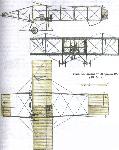 |
А.Шепс - Самолеты Первой мировой войны. Страны Антанты
|
| Учебный самолет "Фарман-IV" (1910г.)
|
 |
H.Nowarra, G.Duval - Russian Civil and Military Aircraft 1884-1969
|
| 'Old Faithful' - a 1909 Farman biplane. Many of these aircraft were still in use as trainers for Russian pilots in 1918!
|
 |
В.Шавров - История конструкций самолетов в СССР до 1938 г.
|
| Общий вид самолета "Фарман-IV"
|
 |
H.Nowarra, G.Duval - Russian Civil and Military Aircraft 1884-1969
|
| Dux-Farman
|
 |
H.Nowarra, G.Duval - Russian Civil and Military Aircraft 1884-1969
|
| The first Dux-built Farman, slightly modified from the original.
|
 |
В.Шавров - История конструкций самолетов в СССР до 1938 г.
|
| "Фарман-Авиата"
|
 |
В.Шавров - История конструкций самолетов в СССР до 1938 г.
|
| Самолет "Фарман-IV" в воздухе
|
 |
H.Nowarra, G.Duval - Russian Civil and Military Aircraft 1884-1969
|
| A ski-equipped Farman of the All-Russia Aero Club, 1911.
|
 |
H.Nowarra, G.Duval - Russian Civil and Military Aircraft 1884-1969
|
| A Farman fitted with improved skis designed by N. P. Lobanov in early 1913.
|
 |
Журнал - Flight за 1910 г.
|
| General view of the Farman biplane from behind, showing the hinged trailing edge of the upper tail-plane, which constitutes the principal new feature in the 1910 model.
|
 |
Журнал - Flight за 1910 г.
|
| The new tail on Legagneux's Henry Farman machine.
|
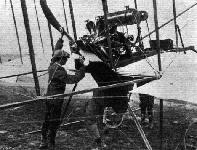 |
Журнал - Flight за 1910 г.
|
| Mr. Henry Farman's biplane, as fitted with a 100-h.p. Gnome engine, at Rheims Meeting last week.
|
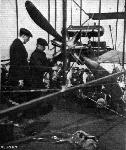 |
Журнал - Flight за 1911 г.
|
| FROM MECHANIC TO LEGION OF HONOUR. - The above interesting photograph reaches us from Mr. E. J. Crisp, of Market Harborough, and serves as a memento of M. Vedrines when he was acting as mechanic to Mr. Robert Loraine. The occasion was Mr. Loraine's visit to Colwyn Bay last summer, the two being seen standing together manipulating the Gnome engine.
|
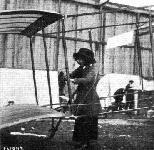 |
Журнал - Flight за 1910 г.
|
| Mrs. Arthur adjusting the wire strainers on Gibbs' racing Henry Farman at Blackpool.
|
 |
Журнал - Flight за 1910 г.
|
| FLYING AT HALIFAX. - Mr. Claude Grahame-White's Henry Farman machine on the racecourse prior to his daring flight on Friday evening last week. The elevator of the machine is just visible outside the shed in the right-hand picture.
|
 |
P.Hare - Royal Aircraft Factory /Putnam/
|
| The famous pioneer pilot Claude Grahame-White in a Farman pusher of the type which gave O'Gorman the designation 'F' Class for pusher designs.
|
 |
P.Jarrett - Pioneer Aircraft: Early Aviation Before 1914 /Putnam/
|
| Claude Grahame-White sets off in his Farman biplane during the Harvard-Boston Aviation Meet at Atlantic, Massachusetts, from 3 to 13 September 1910. Grahame-White won by far the greatest amount of prize money at the event, coming away with $22,100.
|
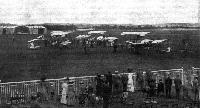 |
Журнал - Flight за 1910 г.
|
| Competitors at the Starting Line at Lanark Meeting, as seen from the Members' Enclosure. - The machines, reading from the front, are: No. 6, Cattaneo's Bleriot; No. 12, Gilmour's Bleriot; 18, Grace's Henry Farman; 131, Ridley's Bierlot; 11, Capt. Dickson's Farman; 21, McArdle's Bleriot; 8, Blondeau's Henry Farman; 5, Champel's Voisin.
|
 |
Журнал - Flight за 1913 г.
|
| The start at Brooklands for the Easter Aero Handicap, which was secured by Mr. T. Alcock on Mr. Ducrocq's H. Farman biplane.
|
 |
Журнал - Flight за 1910 г.
|
| DREXEL OFF ON HIS BLERIOT FOR HIS SPLENDID SEA FLIGHT. - Beyond is Grahame-Whlte's Henry Farman also about to take the air.
|
 |
Журнал - Flight за 1910 г.
|
| One of the most interesting items on the programme of the Midland Meeting at Wolverhampton was the "Quick-rising" Competition. In our photograph Mr. Cockburn, the winner of this contest, is seen on his Henry Farman "toeing" the starting line for one of these trials.
|
 |
Журнал - Flight за 1910 г.
|
| Holding back Captain Dickson's Henry Farman machine for a start at Bournemouth Meeting.
|
 |
Журнал - Flight за 1911 г.
|
| STARTING FOR THE BRIGHON RACE. - Lieut. Snowden-Smith just released for his start on his British-built Farman biplane for Brighton.
|
 |
M.Goodall, A.Tagg - British Aircraft before the Great War /Schiffer/
|
| Hewlett & Blondeau Farman-type biplane for Vickers Flying School.
|
 |
Журнал - Flight за 1910 г.
|
| "GETTING-OFF" CONTEST AT BLACKPOOL. - Grahame-White, on his Henry Farman, takes his turn. On the left the machine is ready, Mr. V. Ker Seymer marking the position of the axles; and on the right the Farman is in the air, the officials, Col. Grantham, Mr. Ker Seymer and Mr. Rutter being seen rushing to mark the exact spot of leaving the ground, Grahame-White's best of 20 ft. 9 ins only just missed the world's record.
|
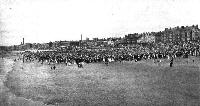 |
Журнал - Flight за 1910 г.
|
| Grahame-White, on his Henry Farman, just rising from the sands on the South Shore, Blackpool, on Sunday afternoon last, to which point he flew from the Aerodrome in order to visit the Lancashire Aero Club.
|
 |
Журнал - Flight за 1910 г.
|
| Robert Loraine ("Tones") on his Henry Farman, ready, with lifebelt on, for his sea flight to Alum Bay - and "en route." Note the lady "snappers."
|
 |
Журнал - Flight за 1910 г.
|
| THE FIRST MAN UP AT BLACKPOOL FLYING CARNIVAL. - Robert Loiaine circles the aerodrome on his Henry Farman Saturday afternoon last. On the left, McArdle and Loraine are discussing the prospects of being able to give some exhibitions on the day before, Friday.
|
 |
Журнал - Flight за 1912 г.
|
| MESSRS COMPTON-PATERSON AND DRIVER IN SOUTH AFRICA. - Mr. Paterson giving an exhibition flight at the Kenilworth Racecourse, and on the right he is seen with Mr. Fred Barling ready for his first passenger flight.
|
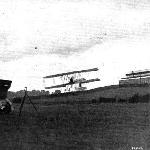 |
Журнал - Flight за 1910 г.
|
| Mr. Rawlinson during one of his flights at Wolverhampton last week on his Henry Farman machine.
|
 |
Журнал - Flight за 1910 г.
|
| Mr. A. Rawlinson during one of his daring flights on his Henry Farman on the opening day of the Nice Meeting. - In the distance, exactly over the heads of the three men on the beach, Olieslagers, on his Bieriot monoplane, can be seen flying.
|
 |
Журнал - Flight за 1910 г.
|
| Capt. Dickson beating the passenger-carrying record on his Henry Farman machine at the Anjou Aviation Meeting.
|
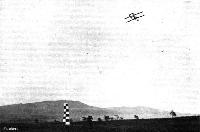 |
Журнал - Flight за 1910 г.
|
| Captain Dickson, on his Henry Farman, making the opening flight at the Lanark International Flight Meeting on Saturday last. Rounding one of the mark towers.
|
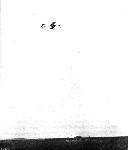 |
Журнал - Flight за 1910 г.
|
| Captain Dickson, who was badly injured by M. Thomas colliding with him in the air at Milan Meeting last week, flying over a camp on Salisbury Plain on his biplane.
|
 |
Журнал - Flight за 1910 г.
|
| Blondeau, on Mrs. Grace Bird's Farman biplane, in flight over the aviation grounds at Brooklands on Bank Holiday.
|
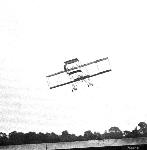 |
Журнал - Flight за 1910 г.
|
| FLYING AT BROOKLANDS FOR THE NEILL CUP. - M. Blondeau making a good turn on Mrs. Grace Bird's Farman biplane.
|
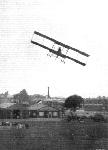 |
Журнал - Flight за 1912 г.
|
| Mr. Claude Grahame-White doing a turn over the hangars at the London Aerodrome on the school Farman 'bus during one of the regular week-end meetings at Hendon,
|
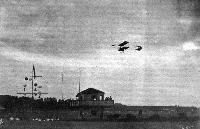 |
Журнал - Flight за 1910 г.
|
| Claude Grahame-Whlte, on Monday evening during his long evening flight on his Henry Farman, passing the Judges' box and signalling apparatus at Bournemouth Aerodrome,
|
 |
Журнал - Flight за 1911 г.
|
| Mr. Maurice Ducrocq flying on a Henry Farman at Brooklands in an attempt upon the 100 Miles Passenger-carrying Record. Note the boy scout in charge of one of the lantern-bedecked "mark-posts" of the course.
|
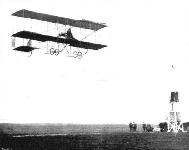 |
Журнал - Flight за 1912 г.
|
| Mr. Lewis Turner flying the Grahame-White Farman in the Figure of Eight Competition.
|
 |
Журнал - Flight за 1912 г.
|
| IN THE AIR DURING THE EASTER FLYING MEET AT HENDON. - Mr. Lewis Turner giving an exhibition on the Henry Farman.
|
 |
Журнал - Flight за 1911 г.
|
| Capt. Burke in flight at Aldershot on the British Army Farman biplane during the first successful flight and before the mishap to the machine.
|
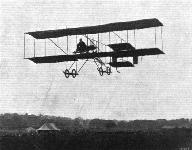 |
Журнал - Flight за 1912 г.
|
| Mr. Richard T. Gates flying at Hendon on the school Farman.
|
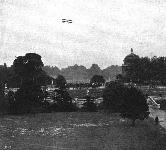 |
Журнал - Flight за 1910 г.
|
| Mr. Claude Grahame-White, on his Henry Farman biplane, giving exhibition flights over the Crystal Palace grounds last week.
|
 |
Журнал - Flight за 1910 г.
|
| Grahame-White rounding the Blackpool Tower on his Henry Farman during one of his recent remarkable cross-country flights.
|
 |
Журнал - Flight за 1911 г.
|
| FLYING ROUND THE LEANING TOWER OF PISA. - Mario Cobianchi circling the famous tower recently. Note the cheering spectators on the two galleries at the top of the tower.
|
 |
Журнал - Flight за 1911 г.
|
| FLYING OVER VENICE. - Cagno, the chief pilot of the Italian School of Aviation at Pordenone, on his H. Farman, flying over Venice on March 2nd. Immense enthusiasm was evinced at the performance, and the band at the foot of St. Mark's Tower, which is now 78 metres high, played the Royal Italian Hymn in honour of the event. Note the agitation amongst the pigeons round the church spires occasioned by this visit.
|
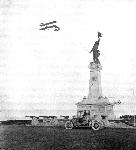 |
Журнал - Flight за 1911 г.
|
| AVIATION AT THE FRENCH MILITARY MANOEUVRES ROUND ABOUT VERDUN. - Lieut. Blard and Capt. Lebeau in their Farman biplane passing over the Kellermann monument at Valmy.
|
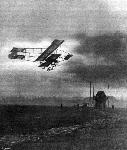 |
Журнал - Flight за 1910 г.
|
| MIDLAND NATIONAL MEETING. - Mr. Lancelot Gibbs making a fine flight on his Henry Farman during the gusty weather on Saturday evening last, the closing day of the meeting.
|
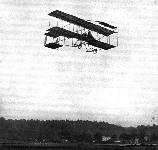 |
Журнал - Flight за 1911 г.
|
| Mr. G. Blondeau, who with Mrs. Maurice Hewlett had such a very unpleasant experience at Plymouth last week, flying at Brooklands on a Farman biplane, with which he in the past has done such fine flying. As we recorded last week, Mr. Blondeau and Mrs. Hewlett in a very sportsmanlike manner returned their fees in view of the clamorous and unbecoming behaviour of the crowd who were kept waiting for a short period for the flying.
|
 |
Журнал - Flight за 1910 г.
|
| Christiaens travelling down the aerodrome on his Henry Farman biplane past the two-shilling enclosure at the Bournemouth Aerodrome. Note the mark-post in the distance for which Christiaens Is making.
|
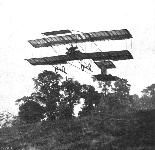 |
Журнал - Flight за 1910 г.
|
| A REMINISCENCE. - Mr. Claude Grahame-White, on his Henry Farman machine, flying from Ranelagh for a tour over Barnes Common and Putney.
|
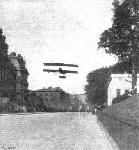 |
Журнал - Flight за 1910 г.
|
| Mr. Grahame-White paying a visit on his Henry Farman to the White House and the War and Navy Departments, Washington, during his recent trip to America. - This is probably the most daring and successful practical flight so far accomplished.
|
 |
Журнал - Flight за 1911 г.
|
| Mr. Paterson, of Freshfield, arriving, with Mr. King as passenger, on their Farman biplane at Altcar on the first day, to witness the coursing for the Waterloo Cup.
|
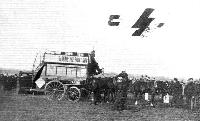 |
Журнал - Flight за 1912 г.
|
| MR. LEWIS TURNER FLYING AT HENDON ON SATURDAY. - Note, in contrast, the ancient 'bus relic.
|
 |
Журнал - Flight за 1912 г.
|
| An exhibition flight at Hendon by Mr. Grahame-White in the Farman 'bus, as seen from outside the entrance to the aerodrome. Note one of the 3-horses conveyances which are now regularly flying for passengers to and from the meeting.
|
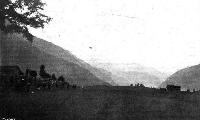 |
Журнал - Flight за 1910 г.
|
| ACROSS THE SIMPLON PASS. - Weyman making a trial flight from Brigue plateau.
|
 |
Журнал - Flight за 1910 г.
|
| PARIS-BRUSSELS FLIGHT. - Legagneux leaves Issy for his journey to Brussels on his Henry Farman.
|
 |
Журнал - Flight за 1911 г.
|
| Mr. C. L. A. Hubert flying high, on his Wolseley-engined Farman, in a mist at the London Aerodrome.
|
 |
Журнал - Flight за 1911 г.
|
| A fine banking by Grahame-White at Hendon on a Henry Farman biplane.
|
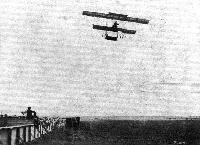 |
Журнал - Flight за 1910 г.
|
| Robert Loraine coming down the aerodrome on his Henry Farman at Blackpool upon the occasion of his recent fine flight.
|
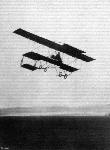 |
Журнал - Flight за 1913 г.
|
| Mr. J. Alcock winning the Easter Aeroplane Handicap at Brooklands on Monday on Mr. Ducrocq's H. Farman.
|
 |
Журнал - Flight за 1911 г.
|
| NO NEED TO WORRY. - This is not an aviator in the last spasms of despair "crashing down" to earth, but just Mr. Maurice Ducrocq flying at Brooklands on his Henry Farman with his hands free from all controlling gear. Yet aviation has not advanced since the Wright Bros, first flew!
|
 |
Журнал - Flight за 1912 г.
|
| HARE SHOOTING BY AEROPLANE. - Recently at Corbeaulieu those "heavenly twins," Martinet and Legagneux, have been amusing themselves by shooting hares and partridges from one of their Farman biplanes. The above photograph depicts Martinet, sitting astride the nacelle, taking his aim, while behind him are Legagneux, at the lever, and another fellow sportsman in the rear passengers seat.
|
 |
Журнал - Flight за 1910 г.
|
| Robert Loraine's start from Blackpool grounds for his splendid and unrehearsed trip to Liverpool and back on Monday.
|
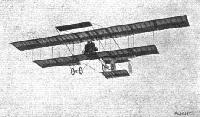 |
Журнал - Flight за 1910 г.
|
| Henry Farman during his recent flight on his biplane with three passengers besides himself.
|
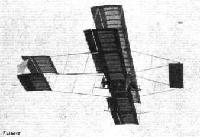 |
Журнал - Flight за 1910 г.
|
| M. Blondeau flying at Brooklands with his French pupil, M. Ducrocq, on his Henry Farman.
|
 |
R.Mikesh, A.Shorzoe - Japanese Aircraft, 1910-1941 /Putnam/
|
| The first flight of an aeroplane in Japan took place on 19 December, 1910, piloted by Capt Yoshitoshi Tokugawa. The aeroplane was an imported Henri Farman biplane.
|
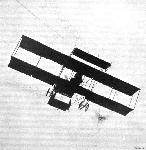 |
Журнал - Flight за 1912 г.
|
| Mr. J. L. Travers making a fine banking on the Farman biplane at the London Aerodrome, Hendon.
|
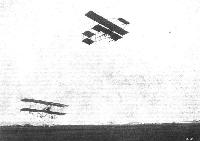 |
Журнал - Flight за 1910 г.
|
| The exciting incident at the Lyons Aviation Meeting when Paulhan, on his Henry Farman machine, overtook Legagneux on his Sommer biplane.
|
 |
Журнал - Flight за 1910 г.
|
| Flying at Brookiands on Wednesday of last week when at one time there were no less than six machines in the air together. - Our photograph shows in full flight the Hon. Alan Boyle on his Avis monoplane (on the left) and Mr. Claude Grahame-White, with a passenger, on his Henry Farman biplane.
|
 |
Журнал - Flight за 1911 г.
|
| "CHASSE-CROlSE" IN THE AIR. - Reminiscence of an incident - one of many similar daily - at Rouen Aviation Meeting last year. Dubonnet, on his Tellier monoplane, crossing under Capt. Dickson on his Henry Farman biplane.
|
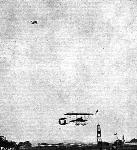 |
Журнал - Flight за 1910 г.
|
| M. Christiaens on his Henry Farman during a long-distance flight, and above, the late Hon. C. S. Rolls going for the height prize on his Wright machine.
|
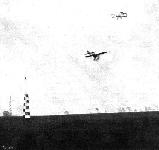 |
Журнал - Flight за 1910 г.
|
| Captain Dickson, on his Henry Farman, and Cattaneo, on his Bleriot, in the air at the same time at the Lanark Flight Meeting.
|
 |
Журнал - Flight за 1912 г.
|
| FLYING AT THE NANCY AVIATION FETE. - A fine natural grand stand. Kuhling on his Bleriot monoplane, and Loridan on a Henry Farman machine, are seen in flight.
|
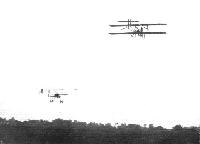 |
Журнал - Flight за 1912 г.
|
| An incident between two biplanes in the recent race for the "Shell" Spirit Prize at Hendon. - Lewis Turner on Farman, and Raynham on the Burgess-Wright, travelling down the aerodrome.
|
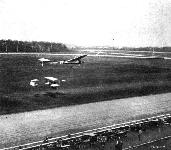 |
Журнал - Flight за 1910 г.
|
| AT BELMONT PARK (N.Y.) INTERNATIONAL MEETING. - Hubert Latham, on his Antoinette, passing directly over Grahame-White on his Henry Farman during one of the competitions.
|
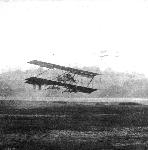 |
Журнал - Flight за 1910 г.
|
| AT BROOKLANDS AERODROME. - Mr. R. F. Macfie on a Macfie biplane flying low recently at Brooklands grounds, with M. Blondeau above on a Farman biplane.
|
 |
Журнал - Flight за 1910 г.
|
| AEROPLANE VERSUS MOTOR CYCLE AT THE A.C.U. BROOKLANDS MEETING. - M. Blondeau racing F. A. McNab, on a 3 1/2-h.p. Trump, round the Brooklands Track.
|
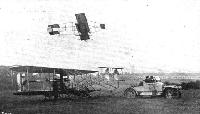 |
Журнал - Flight за 1910 г.
|
| Mr. Claude Grahame-White, on his Henry Farman at Wolverhampton, flying over Mr. Ogilvie's Wright machine, which is being towed back to the starting place.
|
 |
Журнал - Flight за 1910 г.
|
| GRAHAME-WHITE IN FLIGHT ON HIS HENRY FARMAN AT BLACKPOOL AERODROME. - The machine at rest on the ground is Cecil Grace s Bleriot.
|
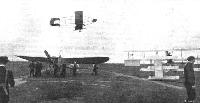 |
Журнал - Flight за 1910 г.
|
| ONE, TWO AND THREE PLANES. - Grahame-White, in his Henry Farman biplane, flying over Drexel's Bleriot monoplane and Roe's triplane.
|
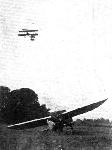 |
Журнал - Flight за 1910 г.
|
| Another "passing" incident during the Midland National Meeting. - Mr. Grahame-White flying over one of the Bleriot monoplanes.
|
 |
Журнал - Flight за 1911 г.
|
| AT BROOKLANDS AERODROME. - Mr. Blondeau in the air with Mrs. Hewlett in the Hewlett and Blondeau School Farman, flying over Mr. Eric England's Hanriot monoplane.
|
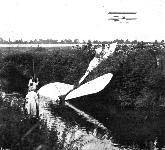 |
Журнал - Flight за 1910 г.
|
| CORDONNIER'S MISHAP AT BROOKLANDS ON BANK HOLIDAY. - His Hanriot monoplane on the bank of the River Wey after his sudden descent. Overhead Blondeau is in full flight on his Henry Farman. Note the punting party ready to assist if necessary.
|
 |
Журнал - Flight за 1910 г.
|
| FLYING AT BROOKLANDS. - M. Blondeau flying over Mr. Macfie's biplane at rest below.
|
 |
Журнал - Flight за 1910 г.
|
| THE AGGREGATE TIME FLIGHT COMPETITION AT BROOKLANDS FOR THE NEILL CUP. - M. Blondeau making a flight. On the ground is Mr. Macfie's biplane, Mr. Macfle, without a hat, standing in the foreground.
|
 |
Журнал - Flight за 1910 г.
|
| GRAHAME-WHITE ON A DISTANCE FLIGHT. - At rest is Capt. Dickson's Farman.
|
 |
Журнал - Flight за 1911 г.
|
| AT BROOKLANDS - FLYING AT DUSK. - Mr. Ducrocq, on the Hewlett and Blondeau Henry Farman biplane passing over Mr. Blondeau's machine at rest on the aerodrome.
|
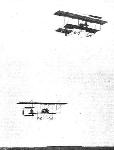 |
Журнал - Flight за 1910 г.
|
| A brace of Henry Farmans racing at Rheims Aviation Meeting on Sunday last.
|
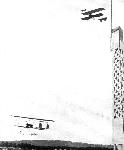 |
Журнал - Flight за 1911 г.
|
| Weyman, the great pilot of the Nieuport monoplane, in the earlier days was a biplane pilot. Our photograph above shows him and Tetard each on Henry Farman machines rounding a mark tower during a race meeting.
|
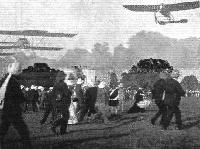 |
Журнал - Flight за 1912 г.
|
| FLYING IN INDIA. - A curious effect from a double exposure of a negative whereby the two machines at Tollygunj were apparently flying at the same time. Note the excitement of the natives in following the evolutions of the machines.
|
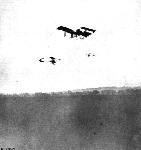 |
Журнал - Flight за 1911 г.
|
| A trio in flight at the London Aerodrome, Hendon. Two Henry Famans and, in the foreground, a Type A Valkyrie.
|
 |
Журнал - Flight за 1912 г.
|
| A TRIO. - Finish of first heat of the Speed Handicap at Hendon, Saturday, the competitors being Mr. Gustav Hamel, Mr. J. L. Travers, and Mr. Sabelli in the order named.
|
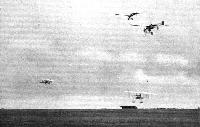 |
Журнал - Flight за 1910 г.
|
| A GROUP OF FOUR FLYERS IN THE AIR AT ONCE AT RHEIMS. - Above, an Antoinette and a Bleriot; below, a Henry Farman; and, to the left, a Wright machine.
|
 |
Журнал - Flight за 1910 г.
|
| Mr. George Barnes, on a Humber monoplane, flying last week at Brooklands close over Mr. Claude Grahame-White's Henry Farman machine.
|
 |
Журнал - Flight за 1911 г.
|
| Mr. Valentine on the Macfie biplane passing over Mr. Ducrocq's Henry Farman at Brooklands last Saturday.
|
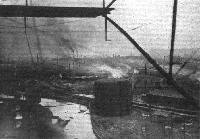 |
Журнал - Flight за 1910 г.
|
| View of Burton-on-Trent, as seen from M. Beaud's Henry Farman biplane when he flew over that town at the recent aviation meeting.
|
 |
Журнал - Flight за 1911 г.
|
| Mr. Amos' flight with Mr. Compton Paterson.
|
 |
Журнал - Flight за 1913 г.
|
| SHOREHAM HARBOUR AS SEEN FROM ABOVE. - From a photograph taken by Mr. Clarence Winchester from Mr. Eric Pashley's biplane.
|
 |
Журнал - Flight за 1915 г.
|
| FROM ABOVE. - The Lawns, Hove, from the snap taken by Mr. Clarence Winchester from Mr. Eric Pasbley's biplane last year.
|
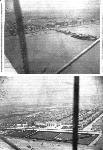 |
Журнал - Flight за 1913 г.
|
| WEST BRIGHTON AND THE WEST PIER, BRIGHTON. - Photographs by Mr. Clarence Winchester from Mr. Eric Pashley's biplane.
|
 |
P.Lewis - British Racing and Record-breaking Aircraft /Putnam/
|
| IN THE AIR DURING THE EASTER 1912 FLYING MEET AT HENDON. - Mr. Grahame-White landing on his Farman after a flight.
|
 |
Журнал - Flight за 1910 г.
|
| In England it is hardly realised yet the rate of aviation progress on the Continent. Already good flyers are abundant, and it is difficult to keep track of the new pupils who are daily completing their initiation into practical aviation. As a typical example of a French aviation school, the above photograph at Mourmelon grounds is very convincing.
|
 |
Журнал - Flight за 1910 г.
|
| Another view of the Mourmelon Aviation School, showing the ordinary business-like methods which pervade the routine of teaching the young idea how to fly.
|
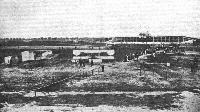 |
Журнал - Flight за 1910 г.
|
| General view of the Stands and Starting Place on the Johannisthal Aerodrome near Berlin. - The machines in the foreground are Baron de Caters' Voisin (No. 1) and Herr Jeannin's Henry Farman.
|
 |
Журнал - Flight за 1910 г.
|
| IN LINE FOR THE FIRST AERIAL "RACE." - MM. Martinet (H. Farman), Mumm (Antoinette), Legagneux (Sommer), and Capt. Dickson (H. Farman), ready for the start from the Anjou Aerodrome for the cross-country race to Saumur on June 6th.
|
 |
Журнал - Flight за 1911 г.
|
| STARTING TO SEE THE OXFORD AND CAMBRIDGE BOAT RACE. - Mr. Grahame-White leaving Hendon on Saturday.
|
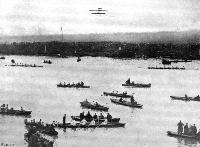 |
Журнал - Flight за 1911 г.
|
| SEEING THE OXFORD AND CAMBRIDGE BOAT RACE BY AEROPLANE. - The finish at Mortlake on Saturday last, with one of the flyers, which appeared upon the scene during the contest, overhead.
|
 |
Журнал - Flight за 1911 г.
|
| The Grahame-White-Bleriot contingent who flew from Hendon on Saturday last and witnessed the Oxford and Cambridge Boat-Race from their aeroplanes, just before their start. From left to right: Mr. Paterson, the Liverpool aviator, who accompanied Mr. Grahame-White as passenger, Messrs. Prier, C. H. Greswell, Claude Grahame-White, Hubert, and G. Hamel.
|
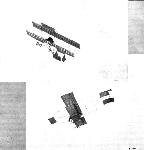 |
Журнал - Flight за 1911 г.
|
| THE GREAT HENDON DEMONSTRATION. - Two snaps of Grahame-White on his Henry Farnmn biplane when making a sharp turn and a vol plane. These photographs were taken with the camera held perfectly horizontal, so that the machine is seen at the angles at which the evoluticns were actually carried out.
|
 |
Журнал - Flight за 1911 г.
|
| A couple of vol planes by Grahame-White on his Henry Farman at the Hendon Demonstration last week. - In the left-hand photograph Mr. McKenna is flying as passenger with Mr. Grahame-White.
|
 |
Журнал - Flight за 1911 г.
|
| A swoop down across the enclosures and machines from over the hangars by Grahame-White at the Hendon Demonstration last week during one of his exhibition flights. From this it will be seen how close down it is possible with perfect safety to steer.
|
 |
Журнал - Flight за 1911 г.
|
| MR. R. A. KING'S FLIGHT TO COLWYN BAY FROM FRESHFIELD. - Filling up tanks before returning, and iust away.
|
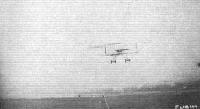 |
Журнал - Flight за 1911 г.
|
| Mr. R. A. King well up on his return journey to Freshfield from Colwyn Bay.
|
 |
Журнал - Flight за 1914 г.
|
| Mr. Cecil Pashley flying with a passenger at Shoreham Aerodrome.
|
 |
Журнал - Flight за 1914 г.
|
| Cecil Pashley banking one of the Farmans round a pylon in last Saturday's speed race at the Shoreham Aerodrome.
|
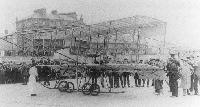 |
M.Goodall, A.Tagg - British Aircraft before the Great War /Schiffer/
|
| Hewlett & Blondeau Farman-type biplane for the Pashley Brothers.
|
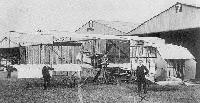 |
M.Goodall, A.Tagg - British Aircraft before the Great War /Schiffer/
|
|
|
 |
Журнал - Flight за 1910 г.
|
| A GROWING "STREET" AT BROOKLANDS AVIATION GROUNDS. - The machine in the shed is Mr. Claude Grahame-White's Henry Farman which he used on the Manchester flight. The next shed is the home of the first machine built by Sir George White's company - the British and Colonial Aeroplane Co., Ltd., of Bristol.
|
 |
Журнал - Flight за 1910 г.
|
| MR. CLAUDE GRAHAME-WHITE AT RANELAGH. - The habitues examining the Henry Farman biplane during the afternoon.
|
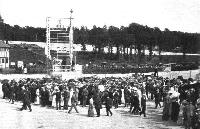 |
Журнал - Flight за 1910 г.
|
| FLYING AT BROOKLANDS. - The scene at Brooklands on Saturday last was the occasion of the auction for the first passenger to ascend on that day with Mr. Grahame-White in his Henry Farman biplane, when Lady Abdy secured the right against Miss Pauline Chase by a bid of 120 guineas.
|
 |
Журнал - Flight за 1910 г.
|
| PARIS FLIGHT SALON. - General view of the centre of the Grand Palais. On the right is seen the Wright biplane, on the left the Maurice Farman biplane, just beyond being the Henry Farman machine, whilst in the foreground, in the centre, is the two-seater Antoinette monoplane.
|
 |
Журнал - Flight за 1910 г.
|
| FRENCH PICARDY ARMY MANOEUVRES AND AERONAUTICS. - General view of the dirigible sheds at Briot-Aviation. One of the Army biplanes will be noted in the centre of the picture.
|
 |
Журнал - Flight за 1910 г.
|
| AEROPLANES AT THE FRENCH PICARDY MANOEUVRES. - General view of the aeroplane sheds at Briot-Avlation during the getting ready of the aeroplanes.
|
 |
Журнал - Flight за 1910 г.
|
| AEROPLANES AT THE FRENCH PICARDY MANOEUVRES. - Adjutant Menard just about to start on his biplane from Briot-Aviation to rejoin his post at Formerie.
|
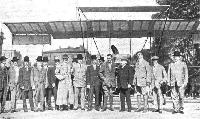 |
Журнал - Flight за 1910 г.
|
| Mr. Claude Grahame-White and the Military Chiefs of the Government when he called at the White House, and the War and Navy Departments in an aeroplane. - Reading from left to right: Richard R. Sinclair, Capt. Barr, Major George O. Squiler, U.S.A., Brig.-Gen. James O. Murray, U.S.A., Capt. H. B. Wilson, U.S.N., Commisioner Johnston, Commodore Johm Barry Ryan, Brig.-Gen. A. W. Greeley, ret., Maj.-Gen. Leonard Wood, Gen. Oliver, Gen. James Ailen, C. Grahame-White, Admiral Dewey, Clifford B. Harmon, Sidney McDonald, Maj.-Gen. James A. Bell.
|
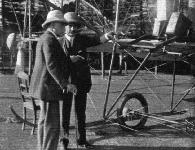 |
Журнал - Flight за 1912 г.
|
| FLYING IN INDIA IN 1910. - Sir Moore O'Creagh, the Commander-in-Chief of the Indian Army, mastering details of the Farman under the guidance of Baron de Caters,
|
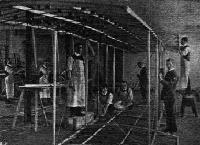 |
Журнал - Flight за 1910 г.
|
| One of the Farman type of machines in course of construction by Messrs. A. V. Roe and Co., to be fitted with an Avro motor, for a Bolton gentleman.
|
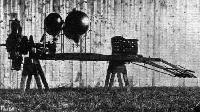 |
Журнал - Flight за 1910 г.
|
| A Gnome motor "set" for Henry Farman biplane, showing engine, propeller, oil and petrol tanks, pilot's seat, and foot control of vertical rudders.
|
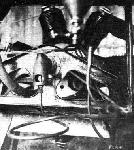 |
Журнал - Flight за 1910 г.
|
| Rear view of Gnome motor on Henry Farman machine, showing carburettor with air inlet and throttle control, position of magneto, petrol tank, and oil feed tube.
|
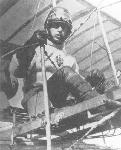 |
H.Cowin - Aviation Pioneers /Osprey/
|
| The young Alexander Prokofieff de Seversky, seen here immediately after completing his first solo flight, on a Farman, at the School of Military Aviation, Sevastopol, in the spring of 1915. Born in 1894, de Seversky had graduated from the Imperial Russian Naval Academy in 1914 before learning to fly. Having gained his 'wings', de Seversky joined a naval bomber squadron operating in the eastern Baltic area. It was while operating with this unit, on 2 July 1915, that de Seversky was to lose a leg when his aircraft was shot down and a bomb it was carrying exploded. Undeterred, de Seversky, now with an artificial limb, went back to flying in the summer of 1916, this time in FBA Type C fighter flying boats. In these machines, de Seversky scored a confirmed 13 victories, making him Russia's third highest ranking air ace. Fortunately, Major de Seversky was in America, as part of the Imperial Russian Naval Air Mission at the time of Russia's internal collapse in the summer of 1917. It was here that de Seversky chose to remain in the wake of the October 1917 Revolution. As a friend and advisor to Brigadier General 'Billy' Mitchell, de Seversky developed one of the earlier automatic bomb sights during the 1920s, prior to founding the Seversky Aircraft Corporation in 1931. Here, he specialised in producing, test flying and selling a line of fast mainly military monoplanes, leading to the US Army's 1937 P-35 fighter. Still cutting a dashing figure, de Seversky parted ways with the company he had set up at the start of the 1940s, becoming a consultant and author of the prophetic 1942 book 'Victory Through Air Power', while his former business venture became Republic Aviation, going on to produce the P-47 Thunderbolt and a series of jet fighters leading to the F-105 Thunderchief of 1959. As for this larger-than-life man, he passed away at the age of 80, in 1974.
|
 |
М.Маслов - Русские самолеты Первой Мировой /Эксмо/
|
| До 1914 г. русские самолеты не имели установленных опознавательных знаков, однако порою на них наносились надписи для определения принадлежности. Представленный на снимке «Фарман-IV» несет на передней рулевой поверхности надпись «ВОЕННЫЙ»
|
 |
М.Маслов - Русские самолеты Первой Мировой /Эксмо/
|
| Типичная картина проведения полетов первых авиаотрядов на русских аэродромах в период 1913-1914 гг. На фото представлены бипланы «Фарман» и моноплан «Ньюпор-IV»
|
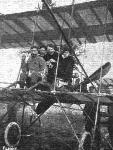 |
Журнал - Flight за 1910 г.
|
| Henry Farman and his three passengers with whom he recently flew.
|
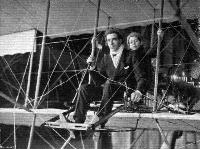 |
Журнал - Flight за 1912 г.
|
| Mr. Claude Grahame-White and a favourite passenger of his, Master S, Guy Lewin, another promising aviation son of Mr. F. Guy Lewin, so well known in the motor world.
|
 |
Журнал - Flight за 1910 г.
|
| Claude Grahame-White (Henry Farman).
|
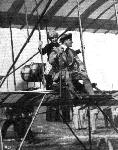 |
Журнал - Flight за 1910 г.
|
| Grahame-White, ready with one of his lady passengers, before the word to let go. - Note the assistants behind holding the machine back from rising.
|
 |
Журнал - Flight за 1910 г.
|
| Claude Grahame-White, at Blackpool aerodrome, just about to start for a flight on his Henry Farman, with Miss Florence Parbury, the authoress, as passenger.
|
 |
Журнал - Flight за 1910 г.
|
| FLYING AT BROOKLANDS. - Mr. Claude Grahame-White, with Lady Abdy in the passenger's seat, just ready to start for his flight at Brooklands last Saturday, which unfortunately ended somewhat disastrously, but happily without any serious injury to either driver or passenger.
|
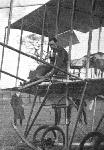 |
Журнал - Flight за 1912 г.
|
| Mr. Grahame-White about to start an exhibition flight at Hendon last Saturday in remembrance of the second anniversary of the great Manchester flight.
|
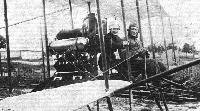 |
Журнал - Flight за 1910 г.
|
| Cheuret, with Mdme. Branger as passenger, on a Henry Farman biplane, Thursday. May 19th, when a new cross-country passenger record was put up between Mourmelon and Chalons Cathedral and back.
|
 |
Журнал - Flight за 1910 г.
|
| THE FLYING MEN AT BOURNEMOUTH AND THEIR "MOUNTS." - Capt. Bertram Dickson (Henry Farman).
|
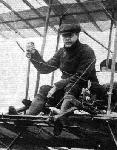 |
Журнал - Flight за 1910 г.
|
| THE FLYING MEN AT BOURNEMOUTH AND THEIR "MOUNTS." - Robert Loraine ("Jones") (Henry Farman).
|
 |
Журнал - Flight за 1910 г.
|
| De Baeder, who is now recovering from his recent severe accident.
|
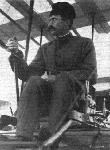 |
Журнал - Flight за 1910 г.
|
| Lieut. Remy, seated in his Henry Farman machine on which he recently spent a week "touring" over the North of France. As we recorded in our last issue, he covered about 500 kiloms. in eight days.
|
 |
Журнал - Flight за 1910 г.
|
| Mr. Weymann, the record flyer, who last week, on his Henry Farman, flew from Paris to Volvlc, 420 kiloms., in his great attempt to win the big Michelln prize for flying with a passenger from Paris to the Puy de Dome mountain in 6 hours. With him is M. Faye, who accompanied him as passenger.
|
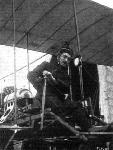 |
Журнал - Flight за 1910 г.
|
| Sub-Lieut. Paulhan on "Le Gypaete," his Henry Farman machine, during the French Army Manoeuvres. - Owing to the accident to his right arm, it will be noted M. Paulhan has to use his left hand for working his levers.
|
 |
Журнал - Flight за 1910 г.
|
| AVIATORS AT DONCASTER MEETING. - Mdlle. Dutrieu, with M. Beau as passenger, ready for a flight on one of the Henry Farmans.
|
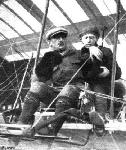 |
Журнал - Flight за 1910 г.
|
| PARIS-BRUSSELS FLIGHT. - M. Legagneux and his passenger, M. Martinet, readv to start for Brussels from Issy on their Henry Farman.
|
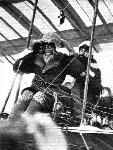 |
Журнал - Flight за 1910 г.
|
| PARIS-BRUSSELS AND BACK BY AEROPLANE. - M. L. Wynmalen and his passenger, M. Dufour, on the Henry Farman immediately before the start for Brussels from Issy.
|
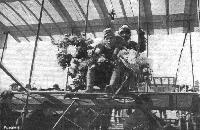 |
Журнал - Flight за 1910 г.
|
| Wynmalen and his passenger Dufour at Issy immediately after their return from the successful Brussels flight last week. Note the bouquets with which they have been presented, and the "mascot," immediately above their heads.
|
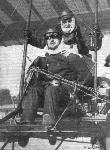 |
Журнал - Flight за 1910 г.
|
| M. Michel Mahieu, with M. Gaston de Manthe as passenger, just before their start last week from Issy for Brussels in the Paris-Brussels 36-hour competition of the A.C.F.
|
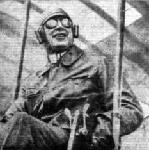 |
Журнал - Flight за 1910 г.
|
| AMERICAN FLYING MEN AT BELMONT PARK MEETING. - Clifford D. Harmon.
|
 |
Журнал - Flight за 1911 г.
|
| Lieut. Cammerman, winner of the Lazare Weiller Cross-country Prize for French officers, on his Henry Farman biplane, Gnome motor. Lieut. Cammerman's flight was Bouy-Montigny-sur-Aube-Bouy, 232 kils. in 4h. 2m. 30s.
|
 |
Журнал - Flight за 1911 г.
|
| Mdlle. Helene Dutrieu, winner of the "Femina Cup" for lady flyers, in counsel with Mr. Henry Farman prior to her record flight at Etampes on her Henry Farman (Gnome motor), of 167.2 kiloms. in 2 hrs. 35 mins.
|
 |
Журнал - Flight за 1911 г.
|
| Capt. Burke ready for flying the British Army Henry Farman machine at Aldershot.
|
 |
Журнал - Flight за 1911 г.
|
| Mr. Blondeau ready to start at Brooklands with Mrs. Hewlett as passenger on their Henry Farman biplane.
|
 |
Журнал - Flight за 1911 г.
|
| Mrs. Hewlett, who is now flying one of the Henry Farmans at Brooklands attached to the Hewlett and Blondeau School. Note the sabots to the right which Mrs. Hewlett finds suitable wear this wet weather.
|
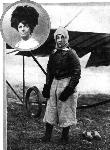 |
Журнал - Flight за 1911 г.
|
| MRS. MAURICE HEWLETT. Who last week, on a Henry Farman biplane, secured her pilot's certificate from the Royal Aero Club, being the first British brevet issued to any woman. Mrs. Hewlett has received her tuition from Mr. Blondeau at Brooklands, and our picture above shows her in her aviation costume, the inset portrait being Mrs. Hewlett in ordinary life.
|
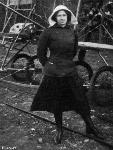 |
Журнал - Flight за 1911 г.
|
| Mrs. J. V. Martin, who is flying so well at the Grahame-White School at Hendon.
|
 |
Журнал - Flight за 1911 г.
|
PASSENGER CARRYING AT BROOKLANDS AERODROME. - Mr. Ducrocq, who is now, with his Henry Farman, one of the most energetic passenger-carrying pilots at Brooklands, in the pilot's seat before a start with Mrs. Keith Jones as passenger. Standing in front are, from left to right, Mrs. G. Phillips, Mr. Keith Jones, Mrs. Palmer, a Ducrocq pupil, and Mr. G. Phillips, both these gentlemen being associated as Directors of Messrs. Keith Prowse and Co. with the box office iust opened by that firm on the grounds and in direct communication
w i t h London for the booking of seats for flights, long and short.
|
 |
Журнал - Flight за 1911 г.
|
| Lieut. Snowden Smith, the Army aviator, on the Hewlett and Blondeau Henry Farman, just after taking Naval Lieut. F. E. T. Hewlett for a 10-mile flight at Brooklands.
|
 |
Журнал - Flight за 1911 г.
|
| Mr. J. V. Martin, the American aviator, who has just obtained his Royal Aero Club pilot certificate, on Mr, Grabame-White's E.N.V.-engined biplane at the London Aerodrome.
|
 |
Журнал - Flight за 1911 г.
|
| Mr. C. C. Paterson, with Mr. King as passenger, iust after their arrival at Altcar on their Farman biplane, for the Waterloo Cup.
|
 |
Журнал - Flight за 1911 г.
|
| Mr. C. L. A. Hubert - a Frenchman - who has just secured his R.Ae.C. pilot's certificate at the Grahame-White School at the London Aerodrome, Hendon. Mr. Hubert has been doing a lot of very successful flying on this Farman, which is fitted with a 60-h.p. Wolseley motor.
|
 |
Журнал - Flight за 1911 г.
|
| Lieut. Snowden Smith about to start on a trip from Brooklands on the Blondeau-Hewlett School biplane.
|
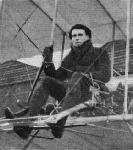 |
Журнал - Flight за 1911 г.
|
| Mr. Ridley-Prentice, a pupil of the Grahame-White School at Hendon, who has made remarkably rapid progress, and has put up some good flights on the school Farman.
|
 |
Журнал - Flight за 1911 г.
|
| Mr. E. F. Driver, one of the recent pilots who have secured their Royal Aero Club brevet at the Grahame-Whlte School. His first cross-country flight was from Hendon to Windsor, which he reached after struggling against a strong wind for an hour and a half. He was accompanied by Capt. Vandeweyer as passenger.
|
 |
Журнал - Flight за 1911 г.
|
| Mrs. de Beauvor Stocks, who is flying so well at the Grahame-White School at Hendon. Mrs. Stocks hoped to qualify officially for her certificate this week.
|
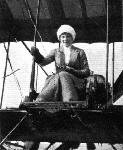 |
Журнал - Flight за 1912 г.
|
| Mrs. C. Stocks, the clever aviatress who was amongst those who flew at Hendon during the Easter Meeting.
|
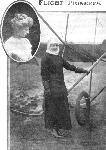 |
Журнал - Flight за 1911 г.
|
| MRS. C. DE BEAUVOIR STOCKS. The second lady to secure a Royal Aero Club pilot's certificate. Mrs. Stocks graduated for her air brevet at the Grahame-White school at Hendon, becoming proficient on a Henry Farman biplane. Inset is a photograph of Mrs. Stocks as in private life, from a photograph by " Kate Pragnell."
|
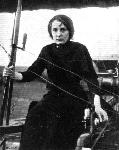 |
Журнал - Flight за 1912 г.
|
| Mdlle. Bernard, the young aviatress who, in endeavouring to obtain her Aero Club of France certificate for flying, was unfortunately fatally injured at Etampes last week-end. Mdlle. Bernard is reported to have endeavoured to rise when making a turn.
|
 |
Журнал - Flight за 1912 г.
|
| THE GRAHAME-WHITE SCHOOL AT HENDON. - Photograph of five members of the Grahame-White establishment at work on Monday morning last. In the pilot's seat Mr. Lewis Turner, with Mr. Ramsay seated behind him. Standing, from left to right, Messrs. Manton, Fowler and Biard.
|
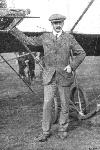 |
Журнал - Flight за 1912 г.
|
| Mr. J. L. Travers, who is now flying so well at Hendon.
|
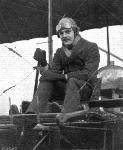 |
Журнал - Flight за 1912 г.
|
| Mr. Marcus Manton, who has just secured his pilot's brevet and made his debut in exhibition flying for the Grahame-White Co. at Hendon on October 5th.
|
 |
Журнал - Flight за 1913 г.
|
| Mr. H. Macandrew, who, at the Maurice Ducrocq School at Brooklands, on the 14th instant, passed for his brevet on the little Farman belonging to the Ducrocq School.
|
 |
Журнал - Flight за 1913 г.
|
| Mr. John Alcock, who has been doing so much good flying work at the Maurice Ducrocq flying school at Brooklands. Mr. Alcock has put up a lot of cross-country work, both with and without passengers, and has secured several wins in the competitions at the Weybridge aerodrome.
|
 |
Журнал - Flight за 1913 г.
|
| Mr. Pemberton Billing, in the pilot's seat, receiving instructions from his tutor and passenger, Mr. Barnwell.
|
 |
Журнал - Flight за 1910 г.
|
| FLYING A T BROOKLANDS. - Mr. Grahame-White's machine, after the mishap at Brooklands, at the edge of the River Wey.
|
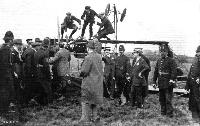 |
Журнал - Flight за 1912 г.
|
| AFTER THE MISHAP IN THE GALE TO GRAHAME-WHITE'S BIPLANE AT HENDON ON EASTER MONDAY. - On the top of the overturned machine are seen Messrs. Grahame-White, Lewis Turner, and Hamel.
|
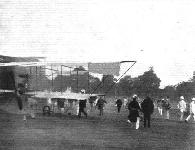 |
Журнал - Flight за 1912 г.
|
| FLYING IN INDIA. - The Farman machine has a little mishap from a backfire igniting the petrol. Fortunately there was plenty of sand on the Tollygunj golf course with which to save the machine before much damage was done.
|
 |
H.Nowarra, G.Duval - Russian Civil and Military Aircraft 1884-1969
|
| Trainee pilot and victim! The dignified appearance of ‘Old Faithful’ is somewhat ruffled by a very heavy landing.
|
 |
H.Nowarra, G.Duval - Russian Civil and Military Aircraft 1884-1969
|
| Another grey hair for the Chief Flying Instructor. Morane-Saulnier and Farman biplane after collision at a Russian flying school.
|
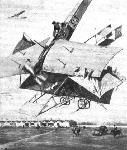 |
Журнал - Flight за 1910 г.
|
| FIRST COLLISION IN THE AIR. - As the mishap to Capt. Bertram Dickson, on his Henry Farman, when M. Thomas, on his Antoinette, dashed Into him from above, at Milan, appeared to A. Beltrame, an Italian artist. This picture appeared in La Domenica del Corriere.
|
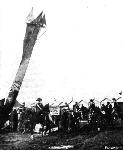 |
Журнал - Flight за 1910 г.
|
| The scene at Milan immediately following the crash to earth of the Antoinette monoplane of M. Thomas and Capt. Dickson's Farman machine. The tail portion of the Farman biplane, showing No. 18, can be seen between the military, the main planes being mixed up completely with the planes of the Antoinette, the tail and body of which is seen standing straight up on end.
|
 |
Журнал - Flight за 1910 г.
|
| LAST WEEK'S STORMS AND THE CROSS-CHANNEL FLYERS. - The wreck of Mr. Loralne's hangar and aeroplane on Saturday last at Dover. "Inspecting" the debris.
|
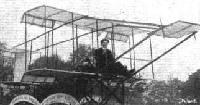 |
Журнал - Flight за 1910 г.
|
|
|
 |
Журнал - Flight за 1911 г.
|
|
|
 |
Журнал - Flight за 1911 г.
|
|
|
 |
Журнал - Flight за 1911 г.
|
| E. G. Norfield's Model Farman.
|
 |
Журнал - Flight за 1912 г.
|
|
|
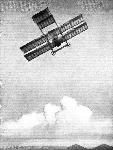 |
Журнал - Flight за 1913 г.
|
| MR. PASHLEY FLYING THE FARMAN MACHINE AT SHOREHAM AERODROME. - From an original drawing by Roderic Hill.
|
 |
Журнал - Flight за 1910 г.
|
| GRAHAME WHITE'S HENRY FARMAN BIPLANE. - The above sketch shows the way in which the auxiliary tail plane on Mr. Claude Grahame-White's Henry Farman machine is inter-connected by means of crossed wires with the front elevator, while the elevator is directly connected to the control lever. In this machine a skid with an elastic buffer is fitted, instead of wheels, to the tail. During a practice flight one of the long front skids was damaged, and Mr. Grahame-White had them both shortened, the part dotted in the above sketch being sawn away.
|
 |
Журнал - Flight за 1912 г.
|
| Fig. 2. - Farman Biplane.
|
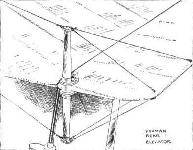 |
Журнал - Flight за 1911 г.
|
| Detail sketch illustrating the rear elevating plane on the Farman biplane.
|
 |
Журнал - Flight за 1911 г.
|
| UNDERCARRIAGES AT OLYMPIA. - Comparative details in the construction of the Farman type wheel and skid combination.
|






































































































































































































